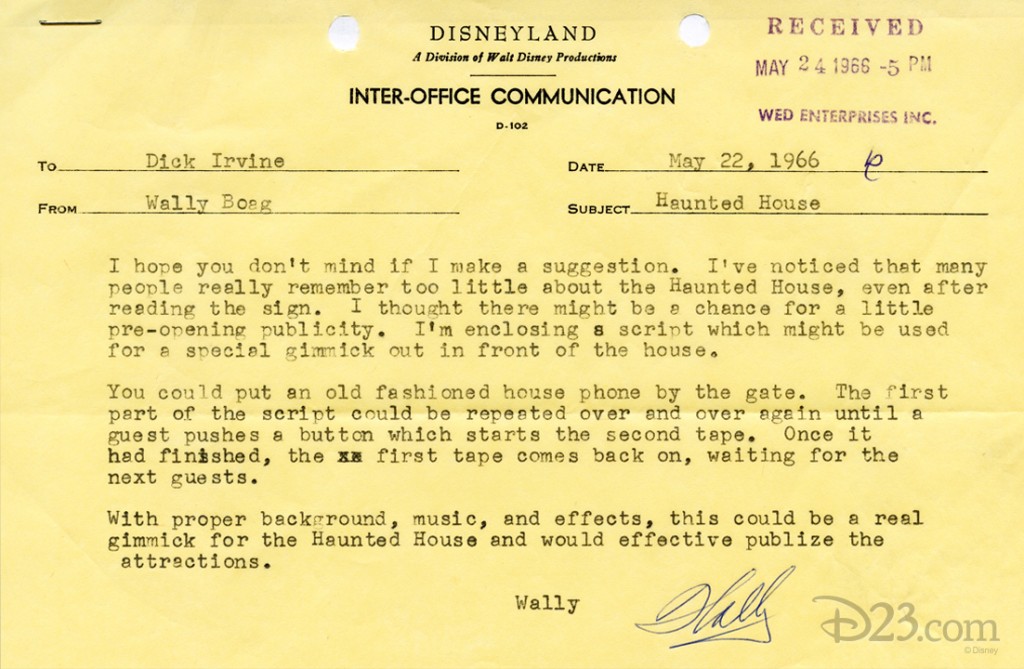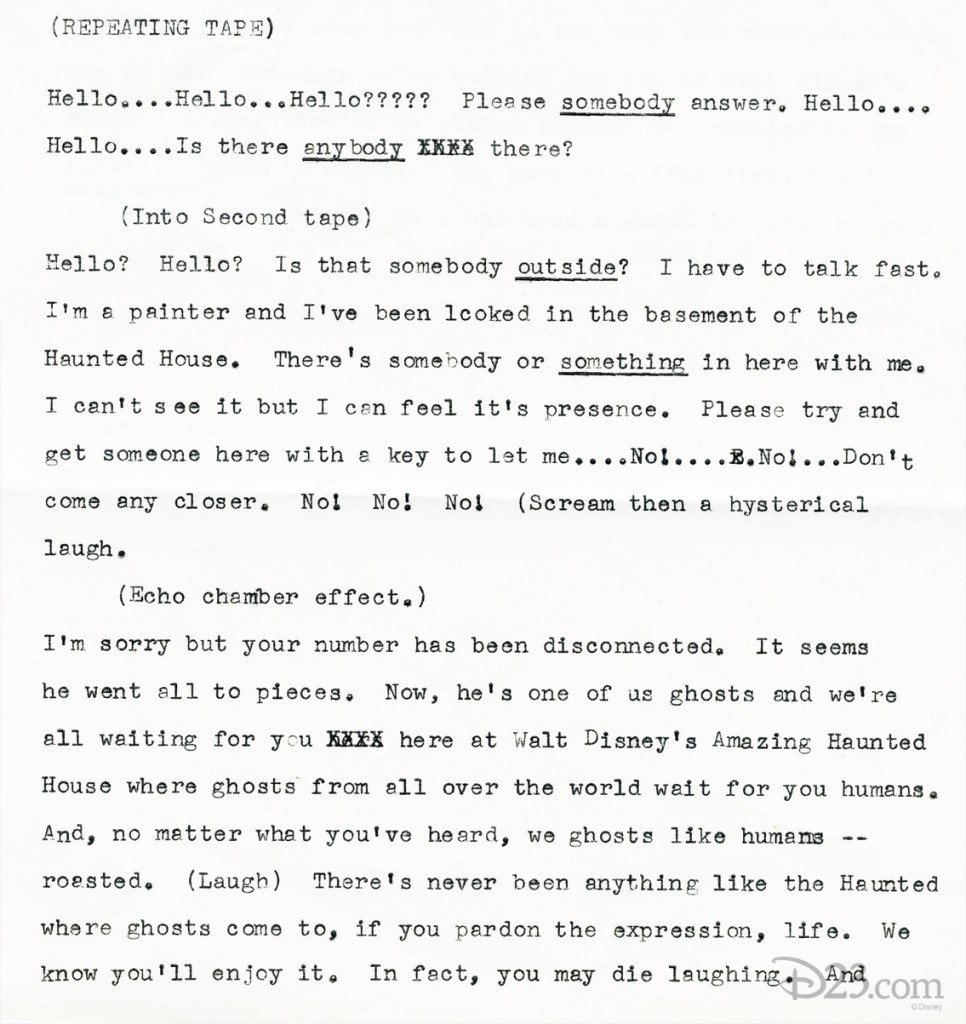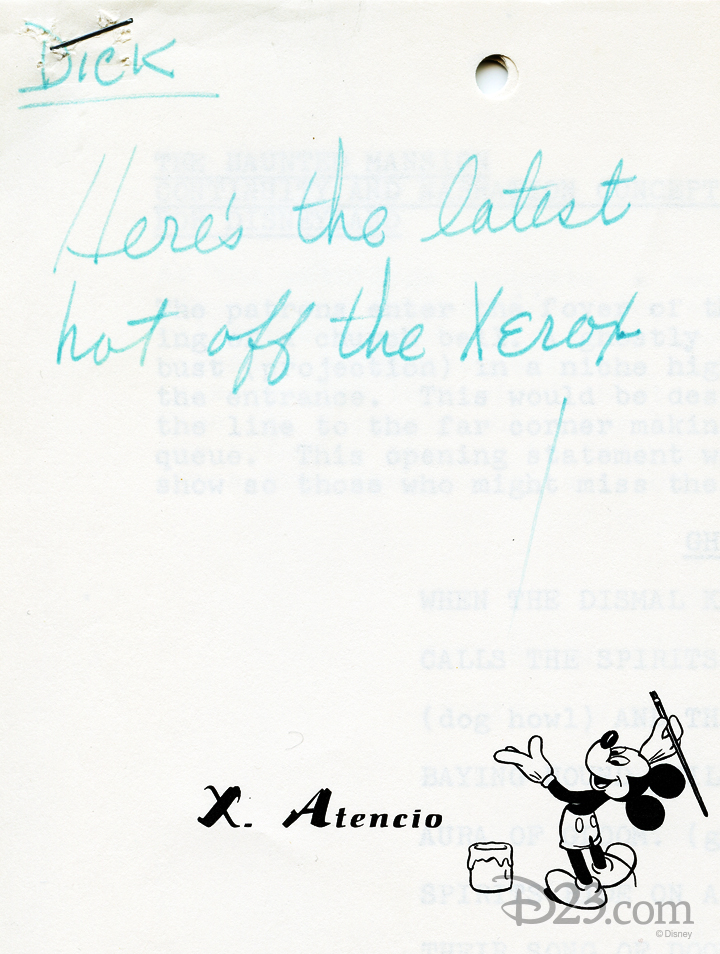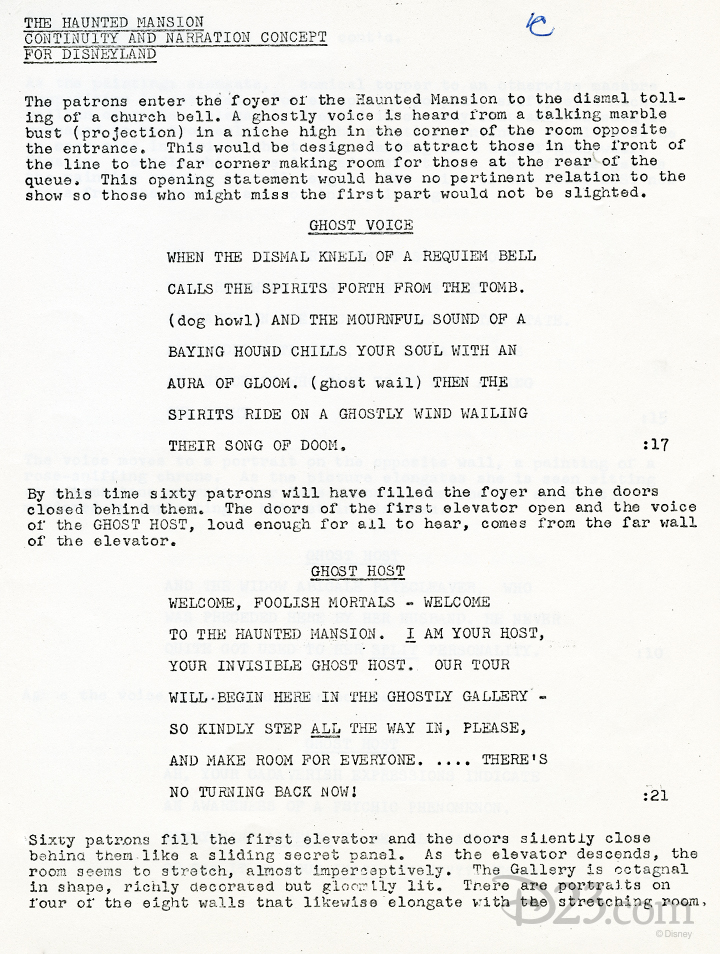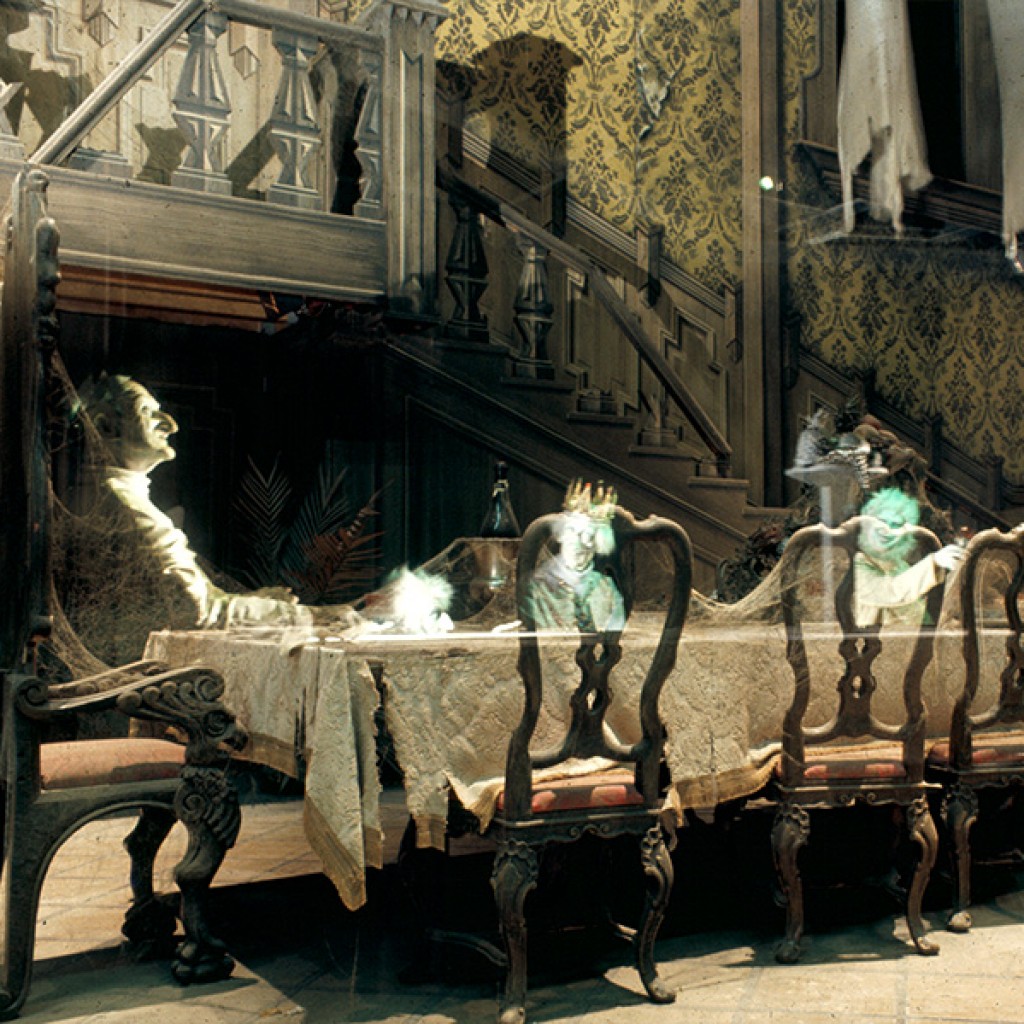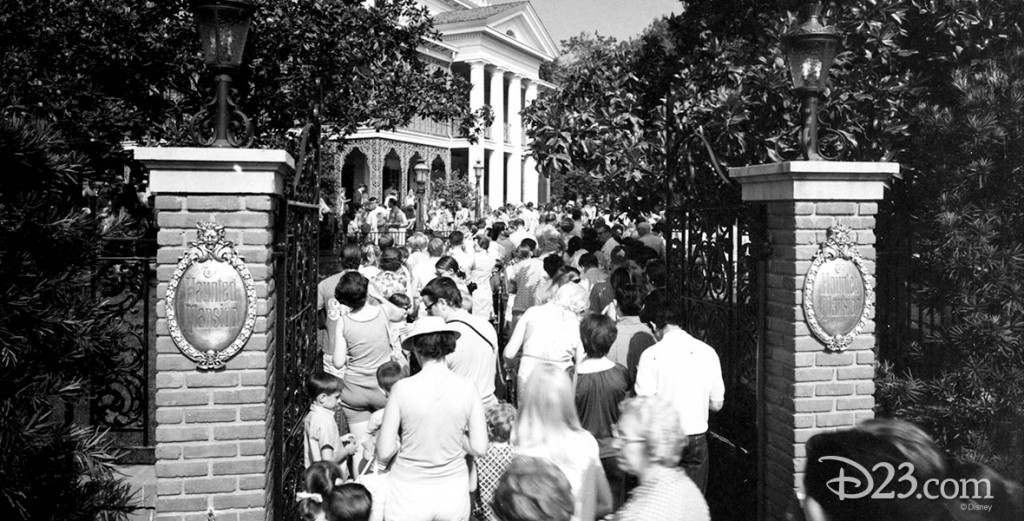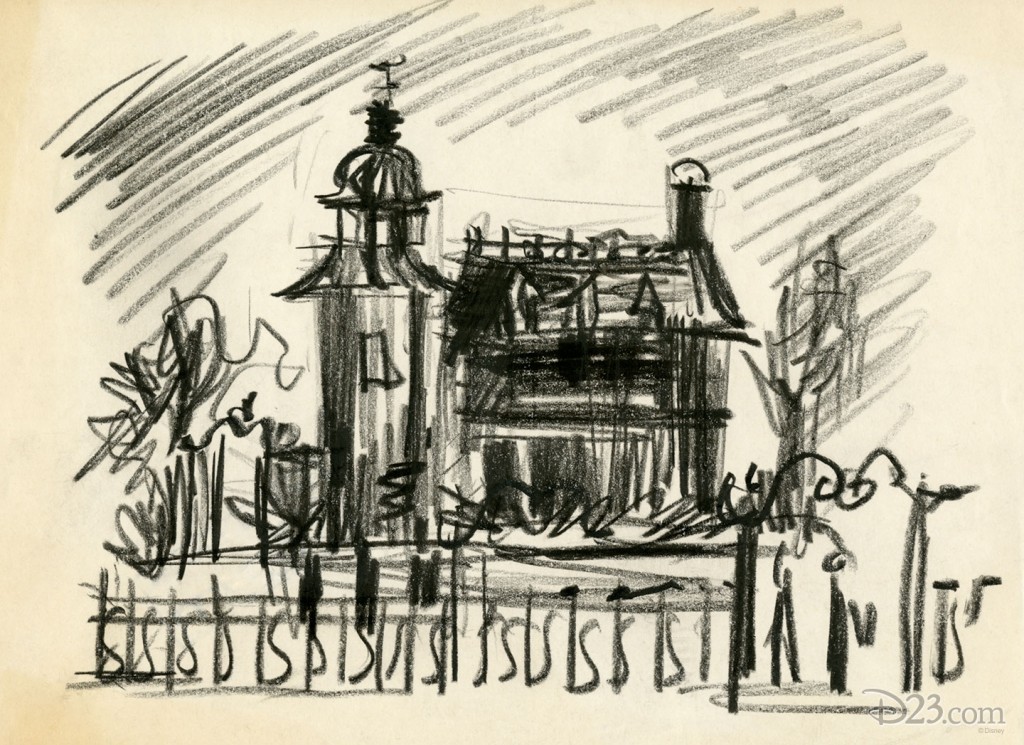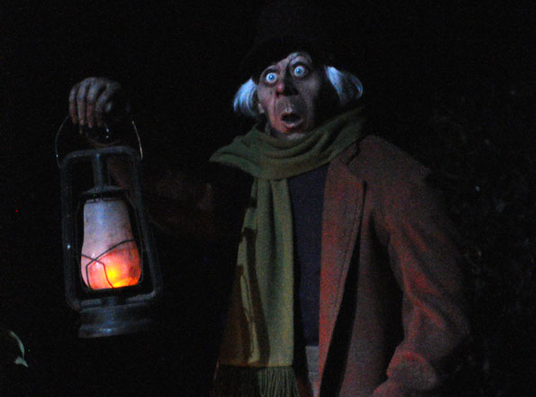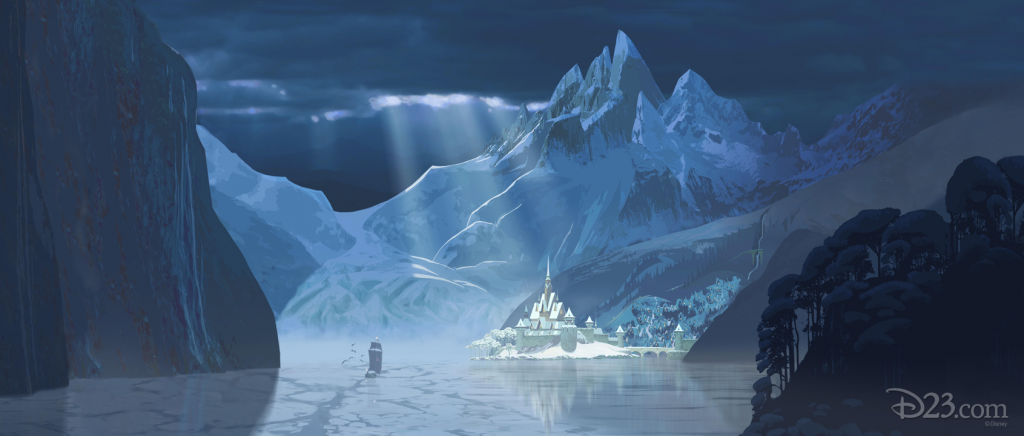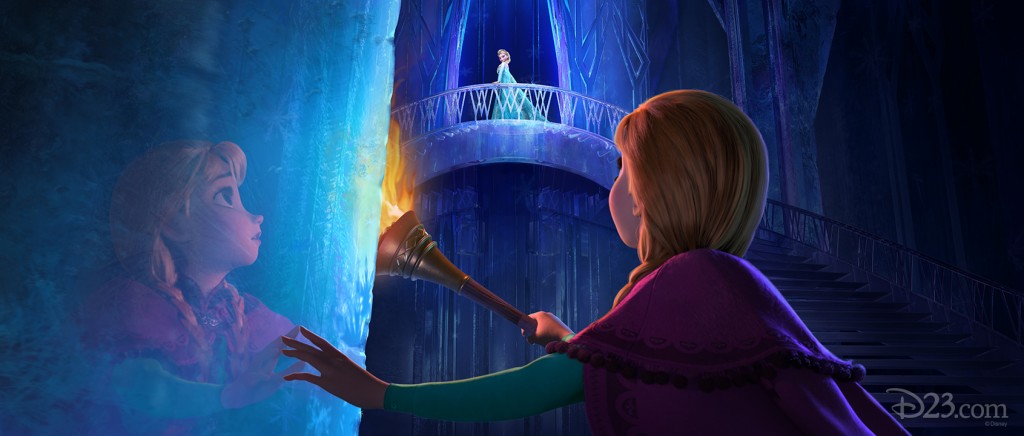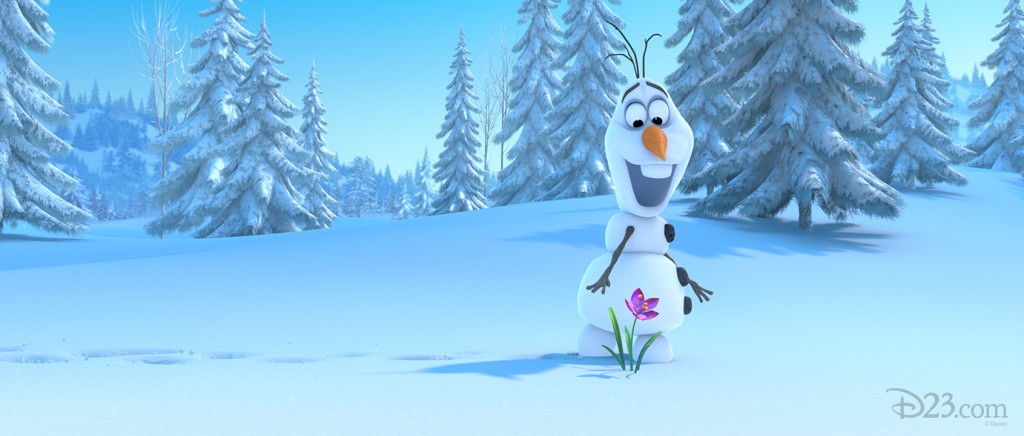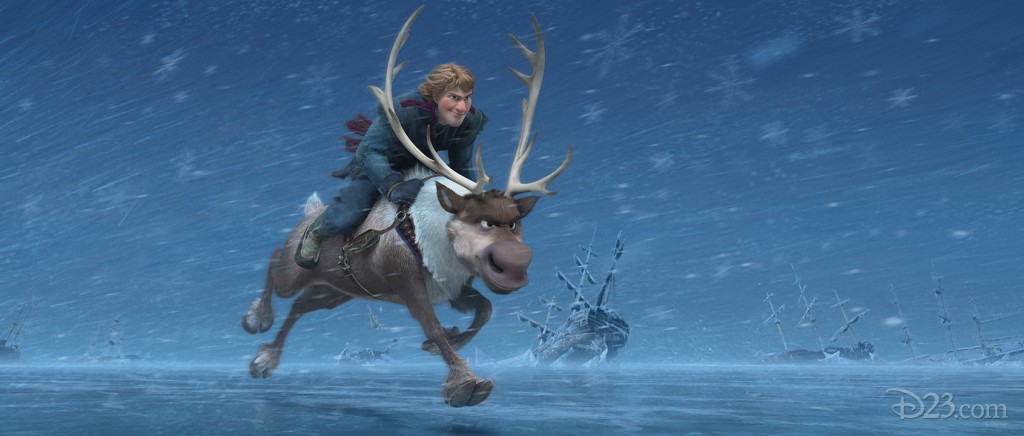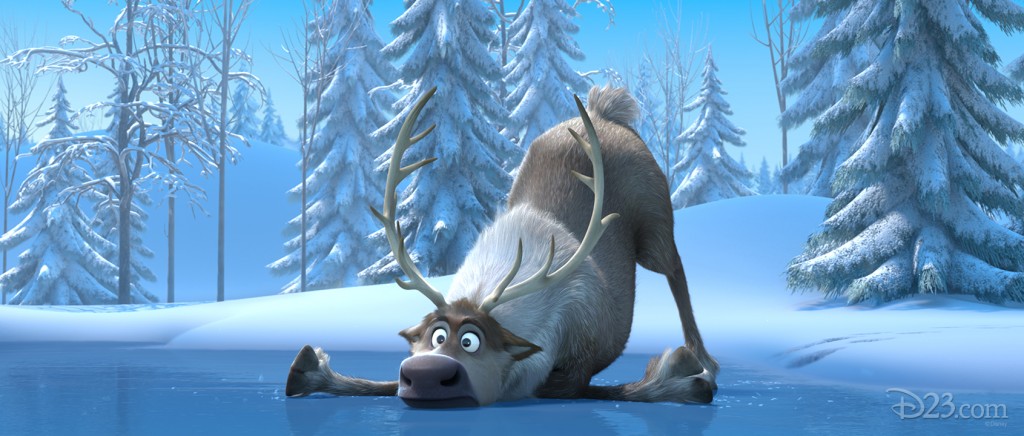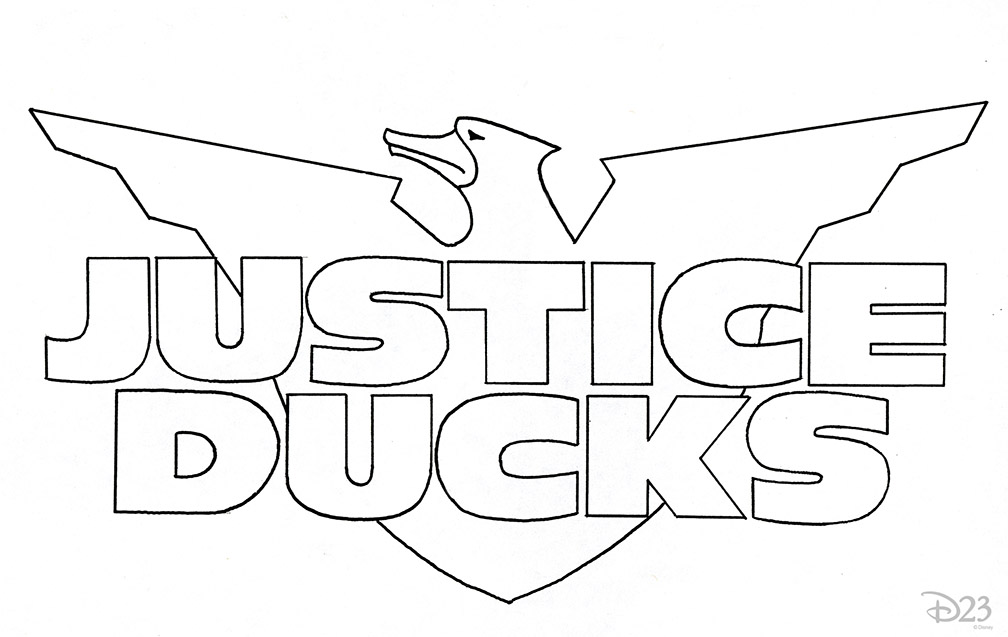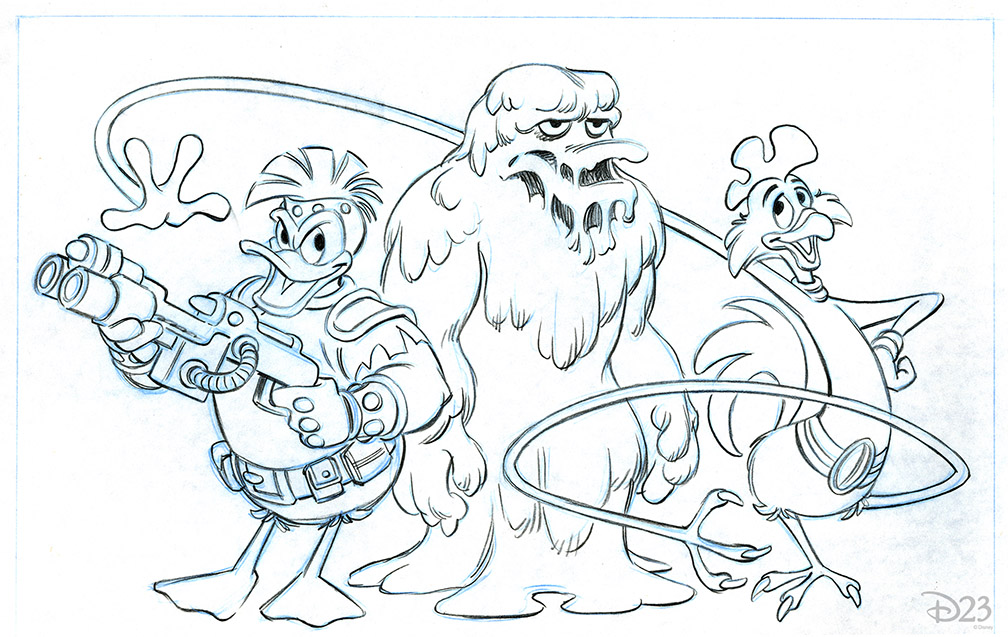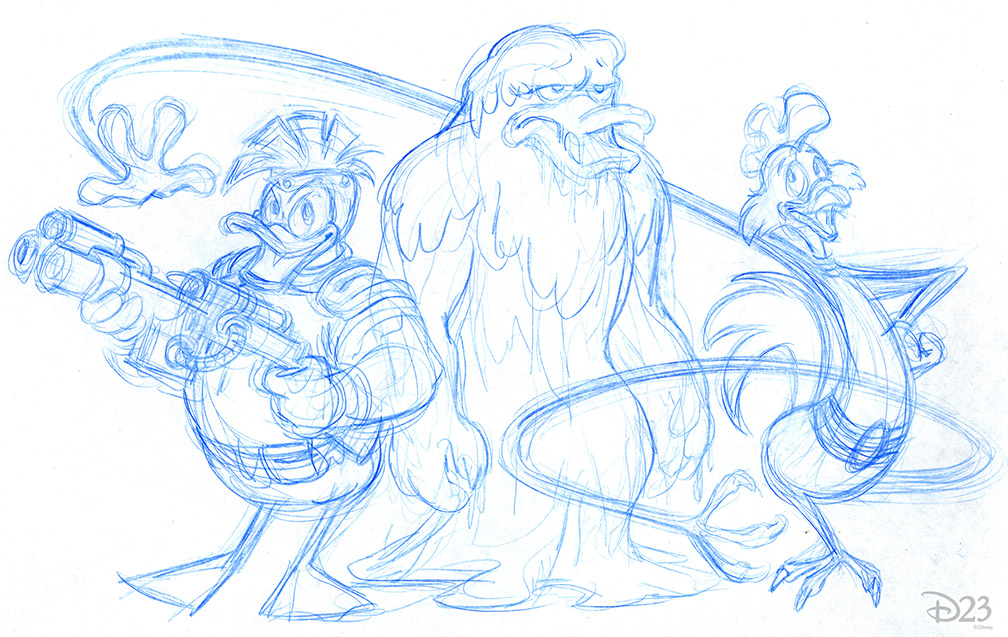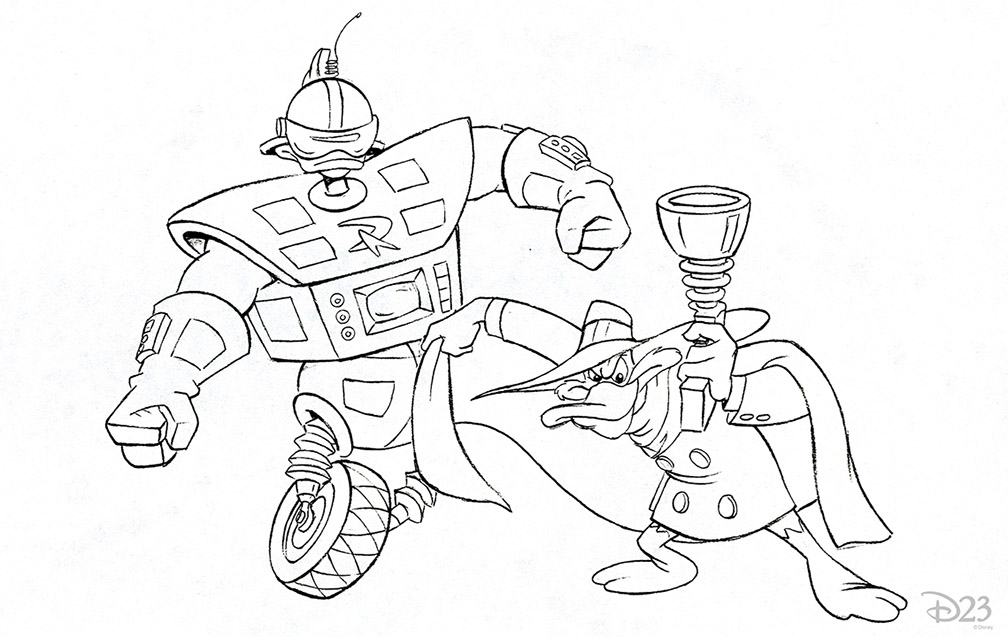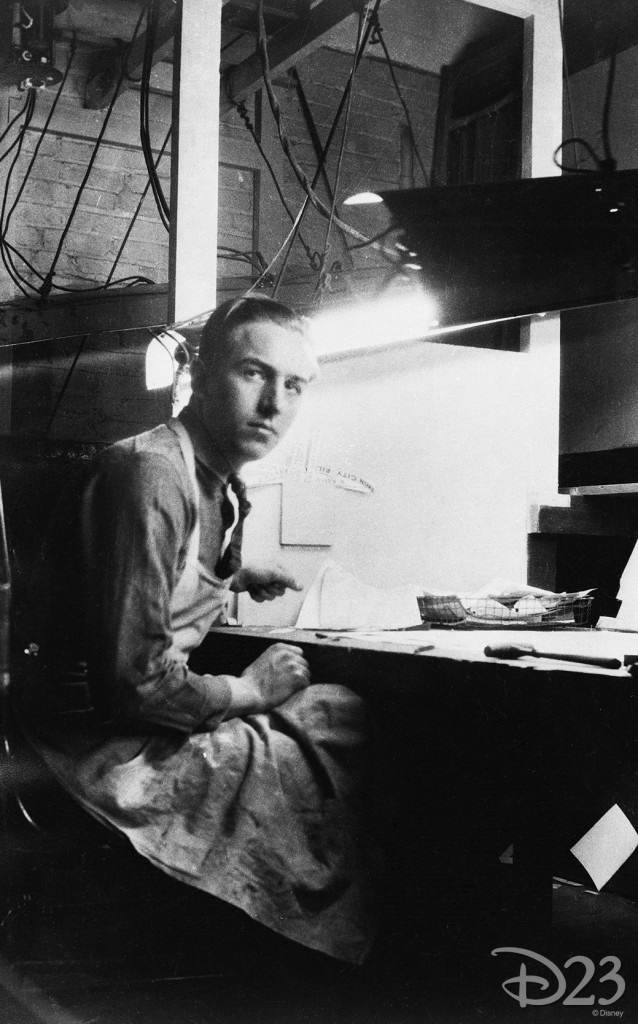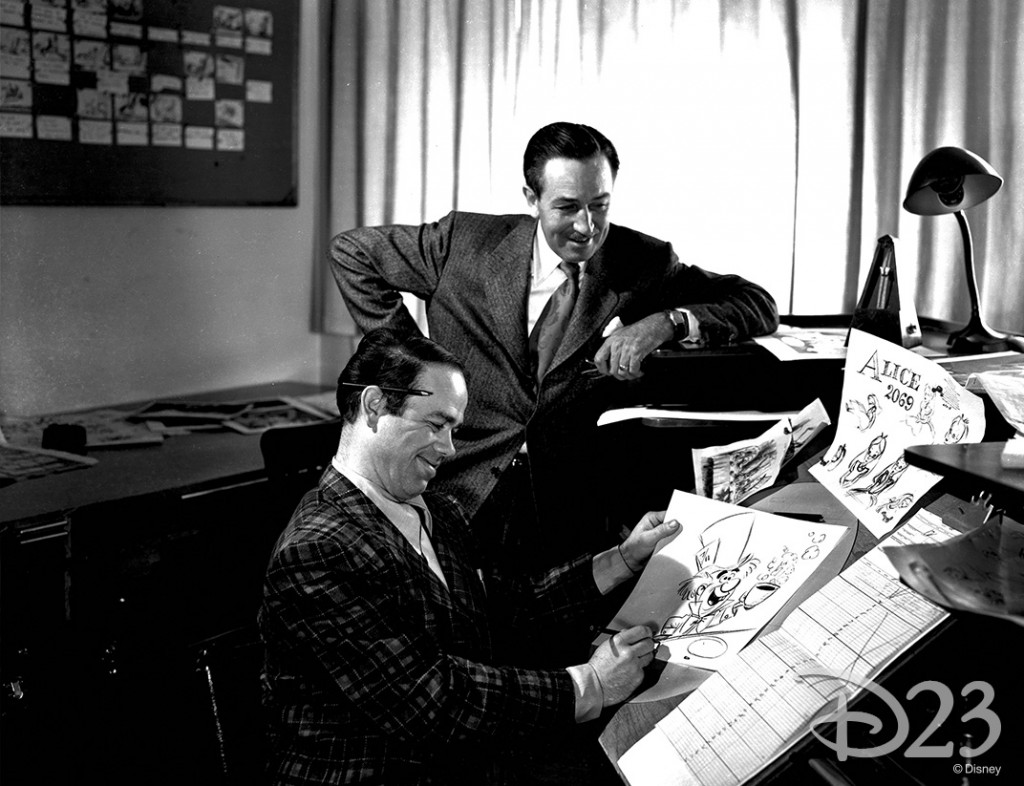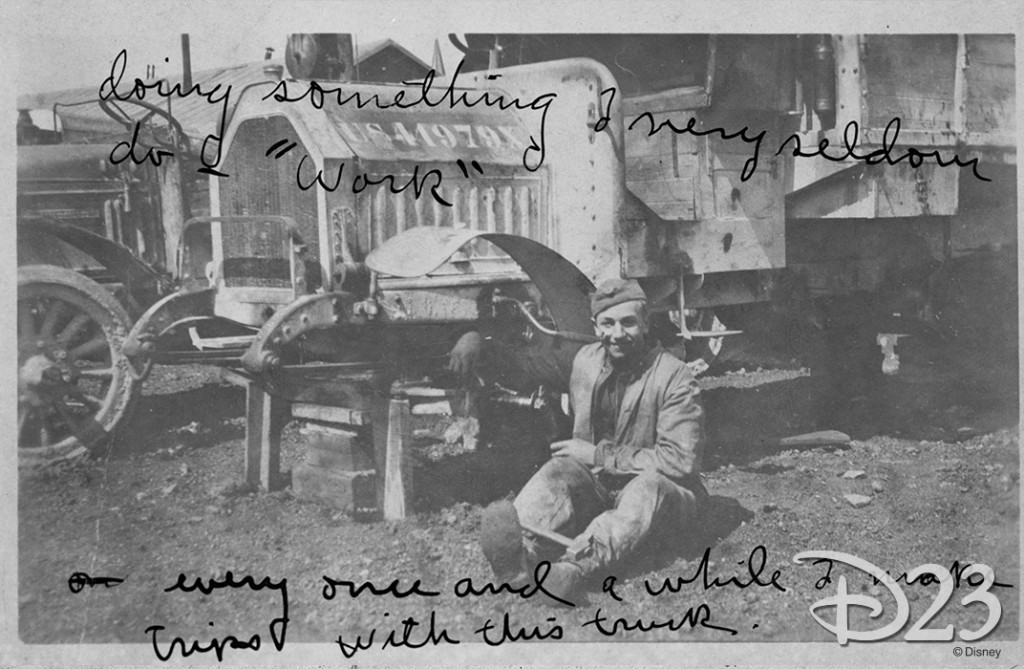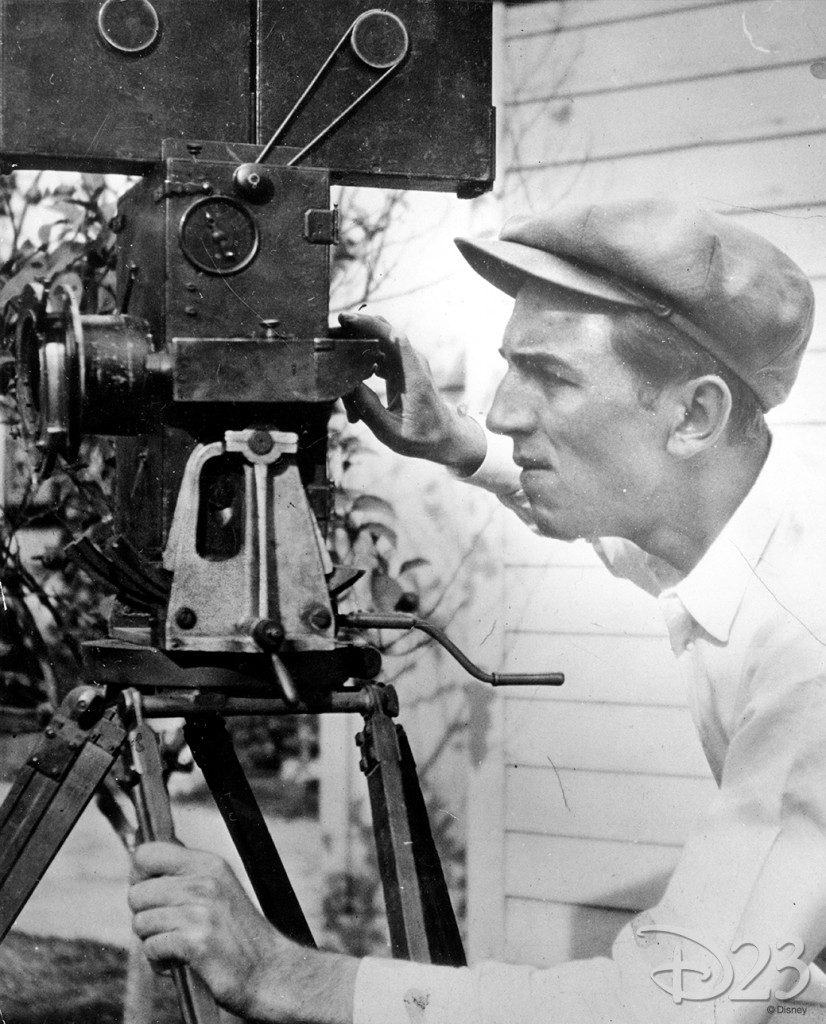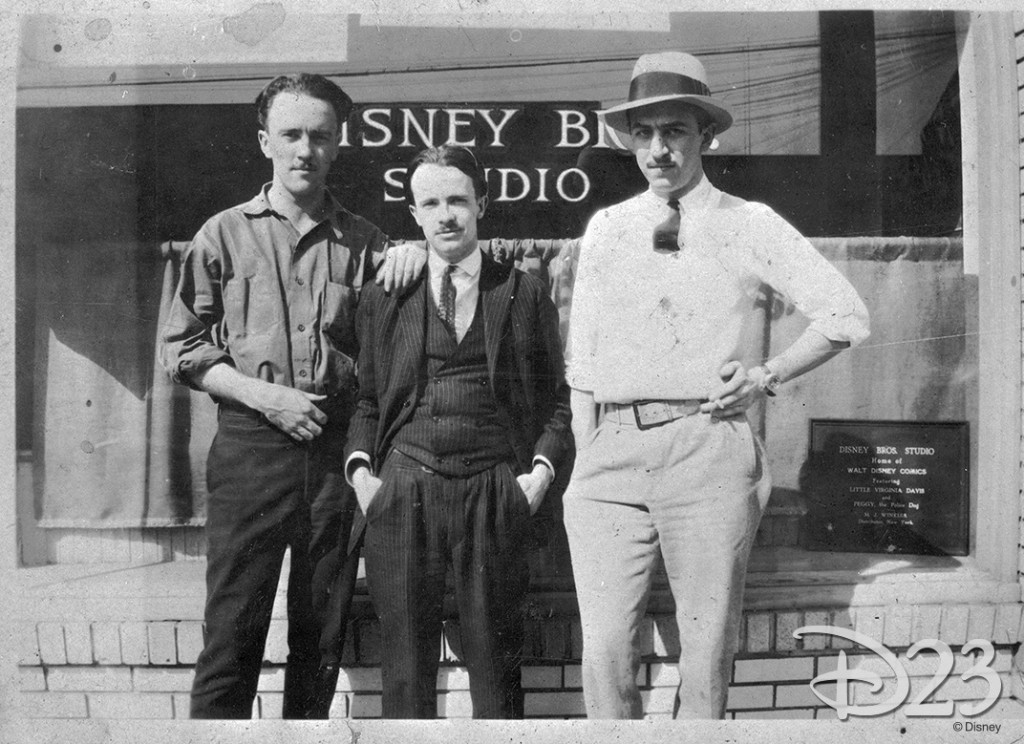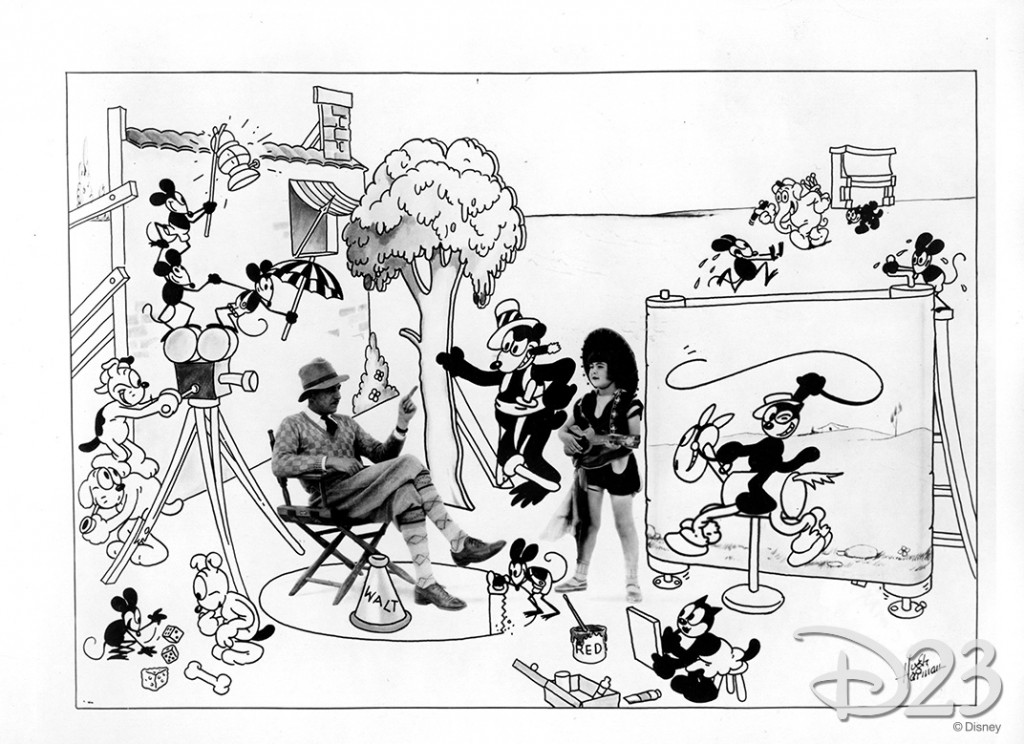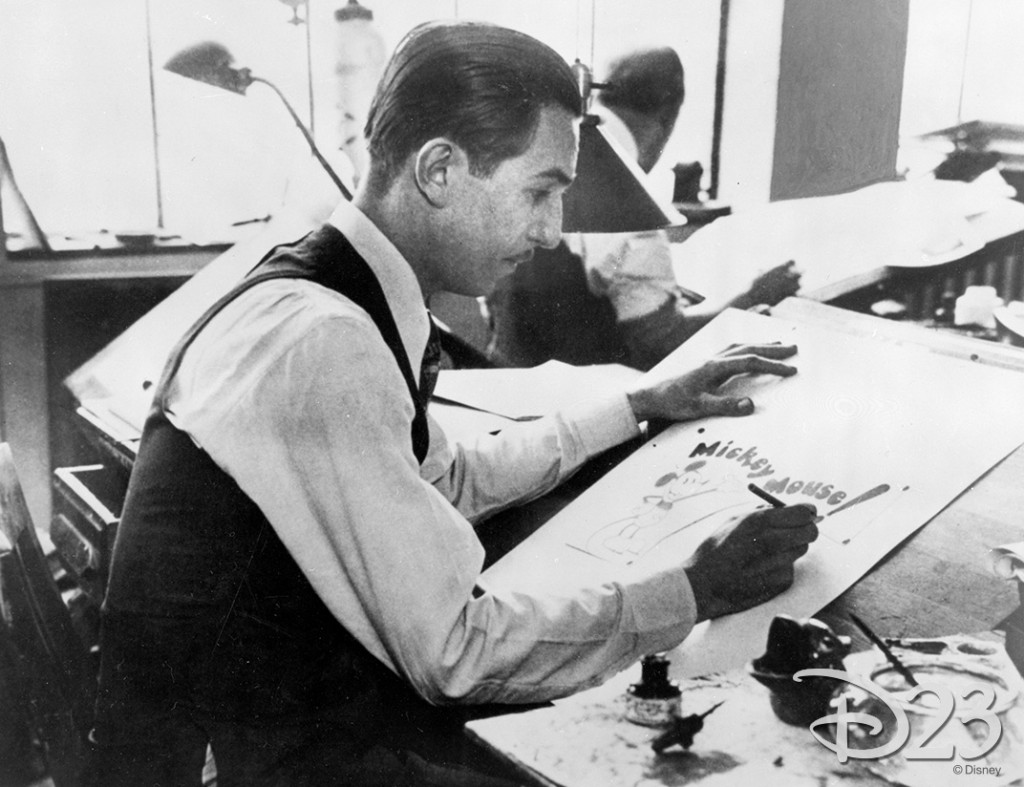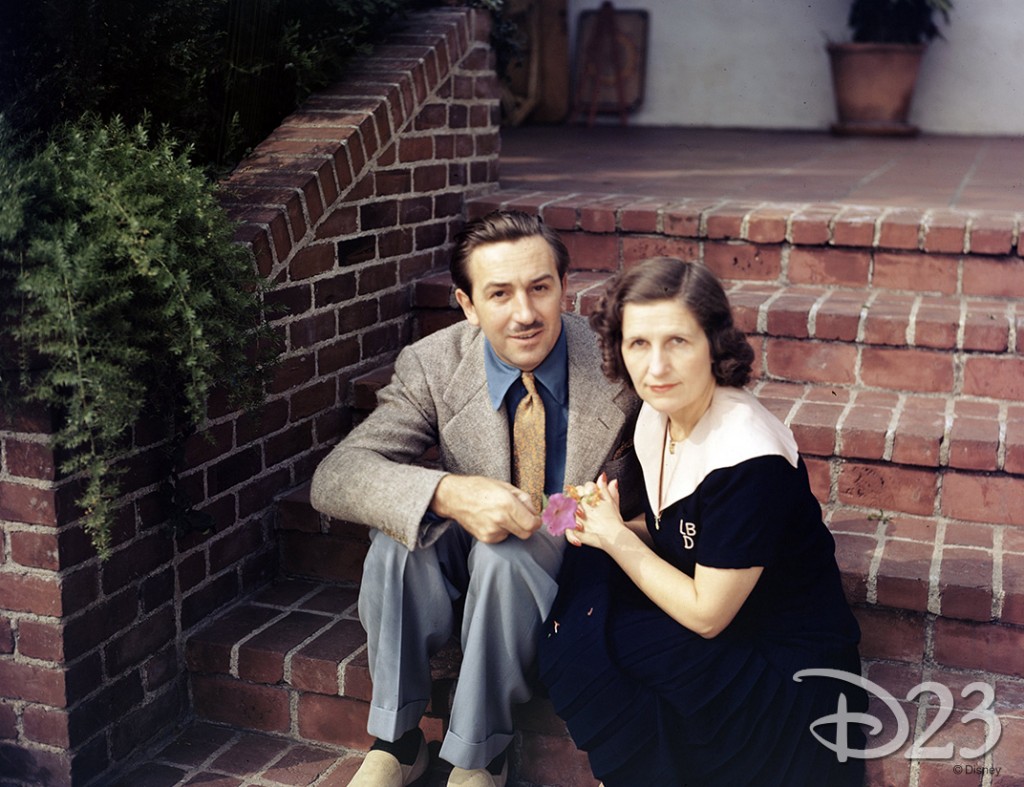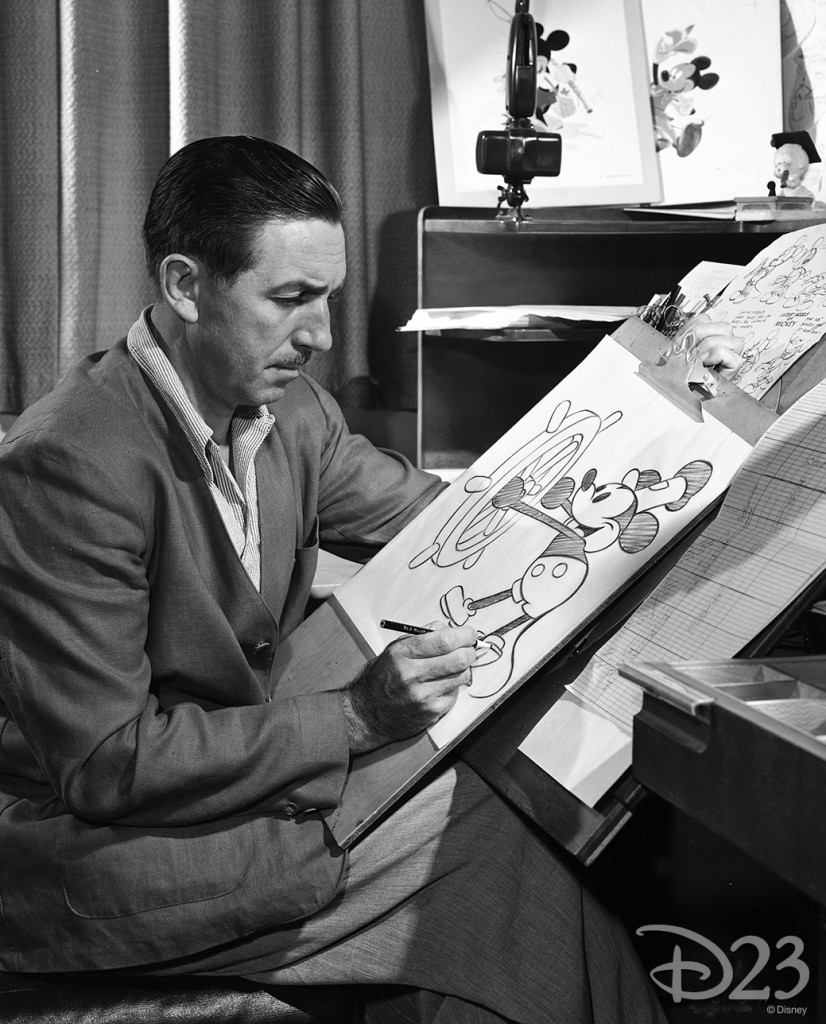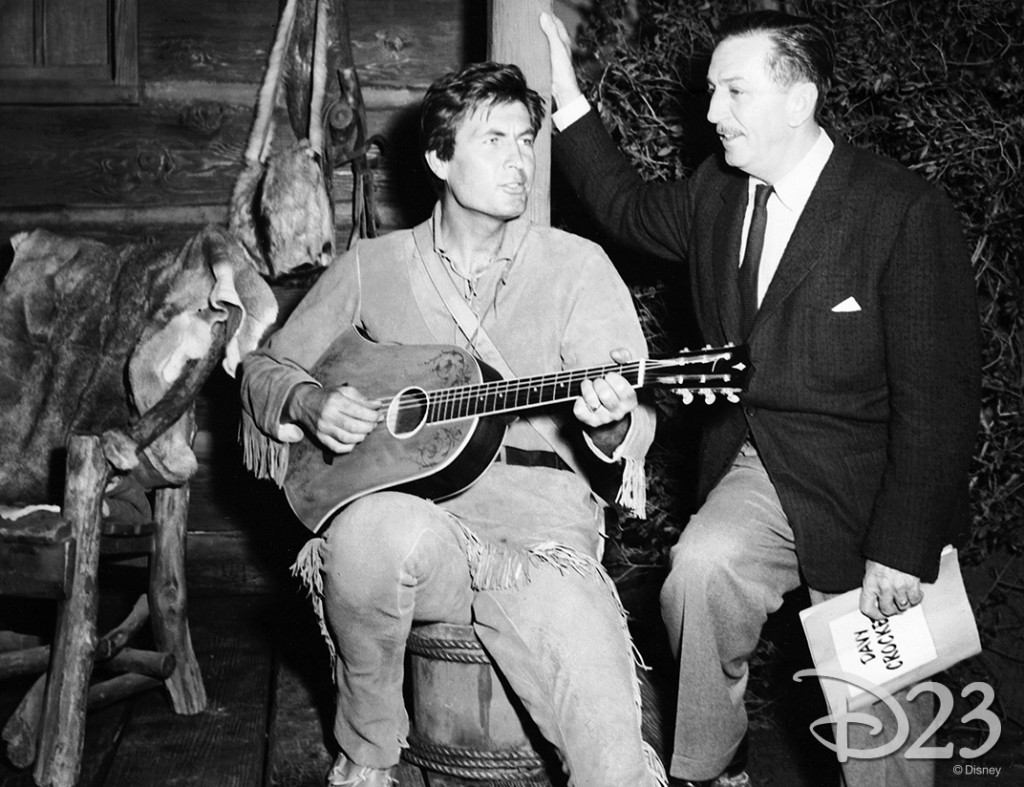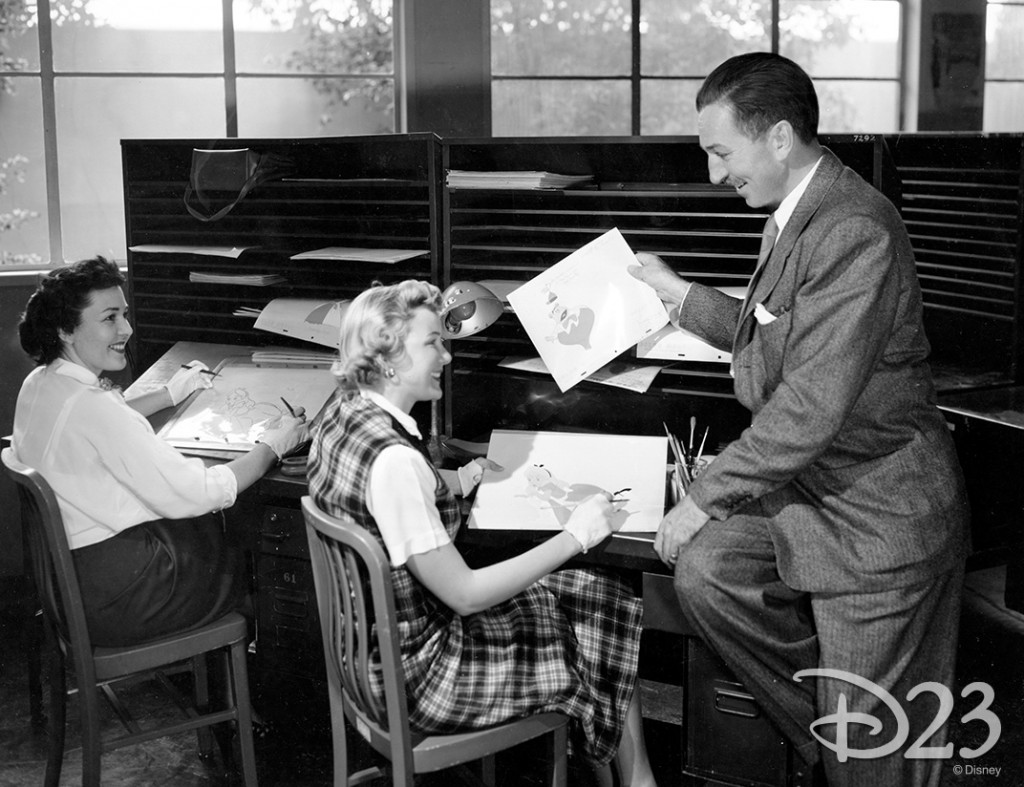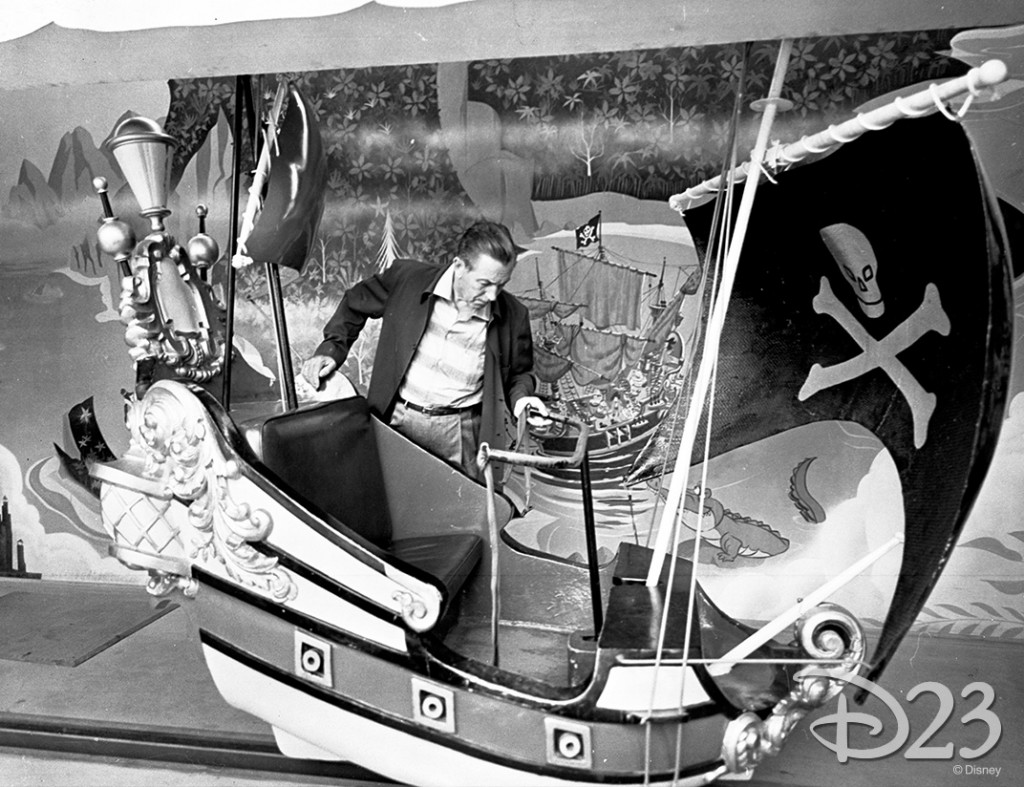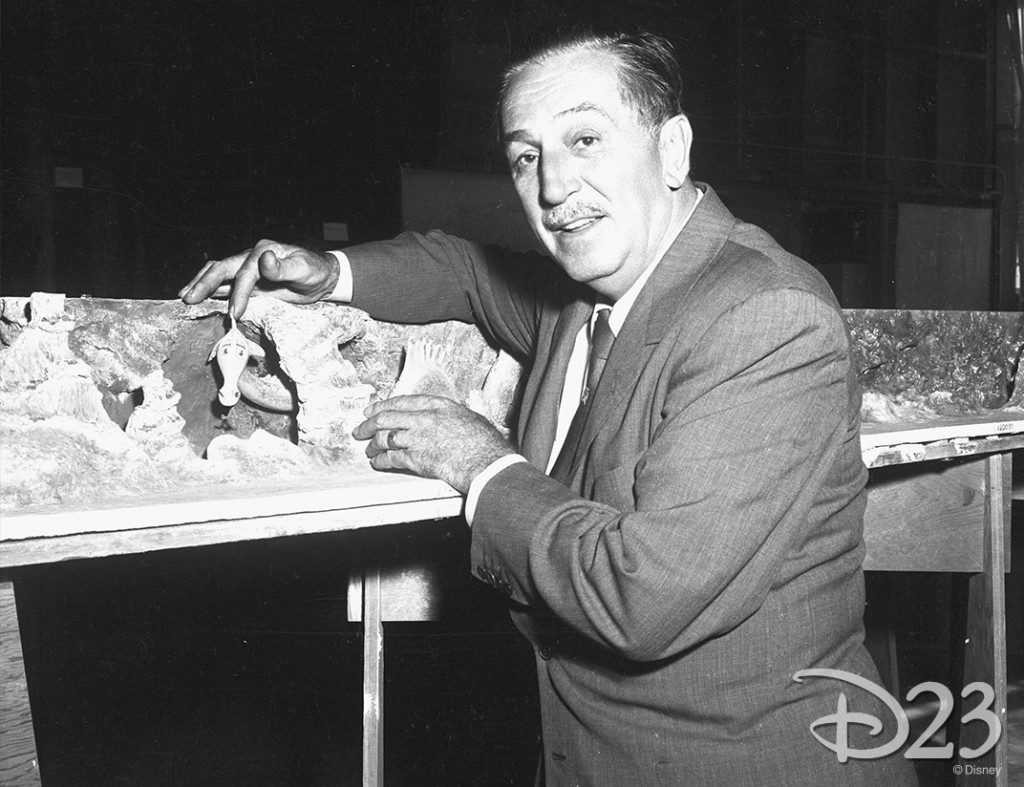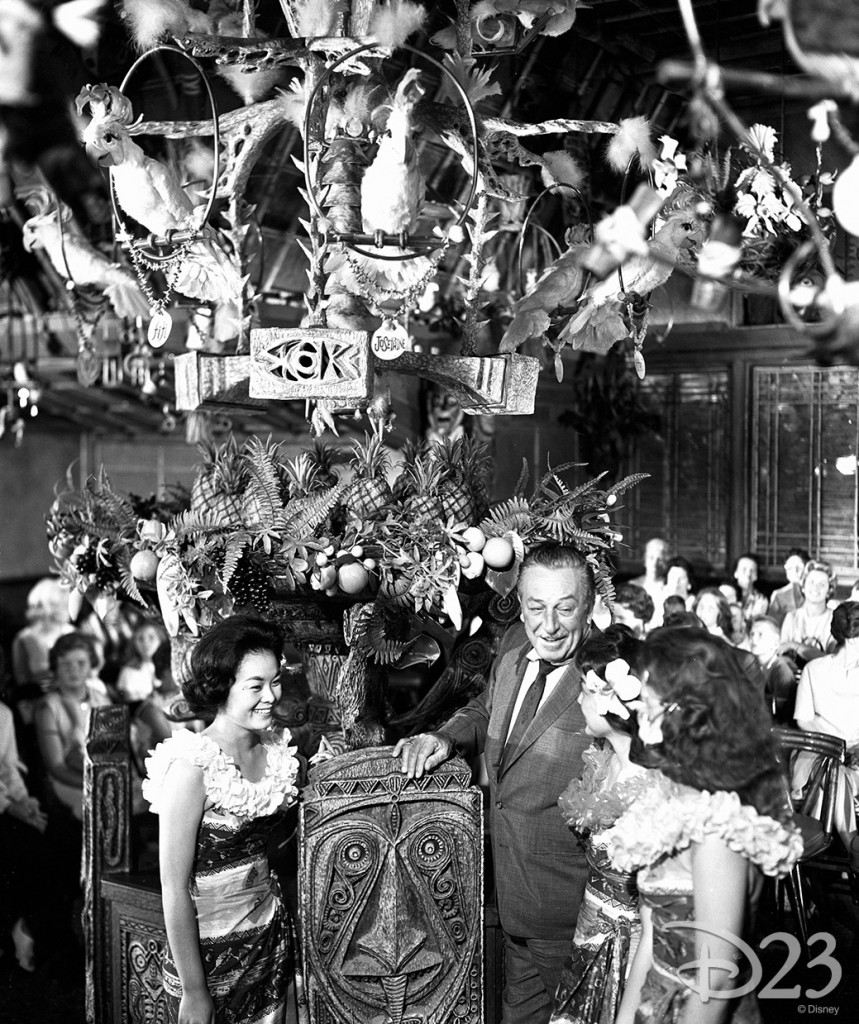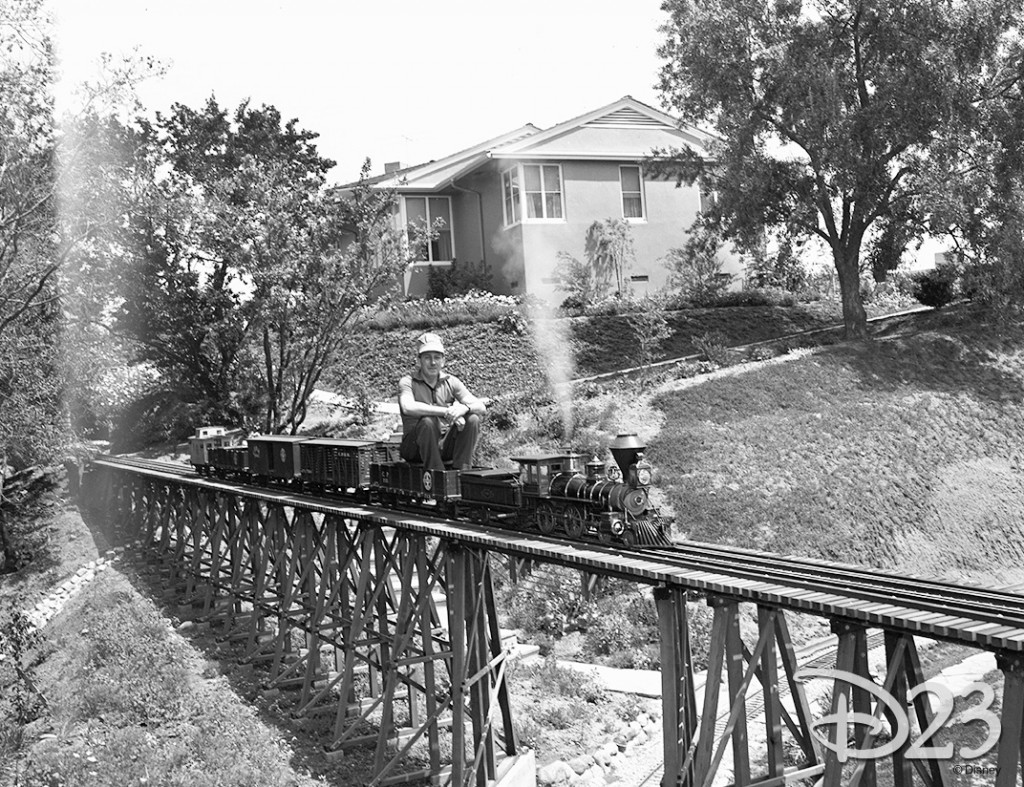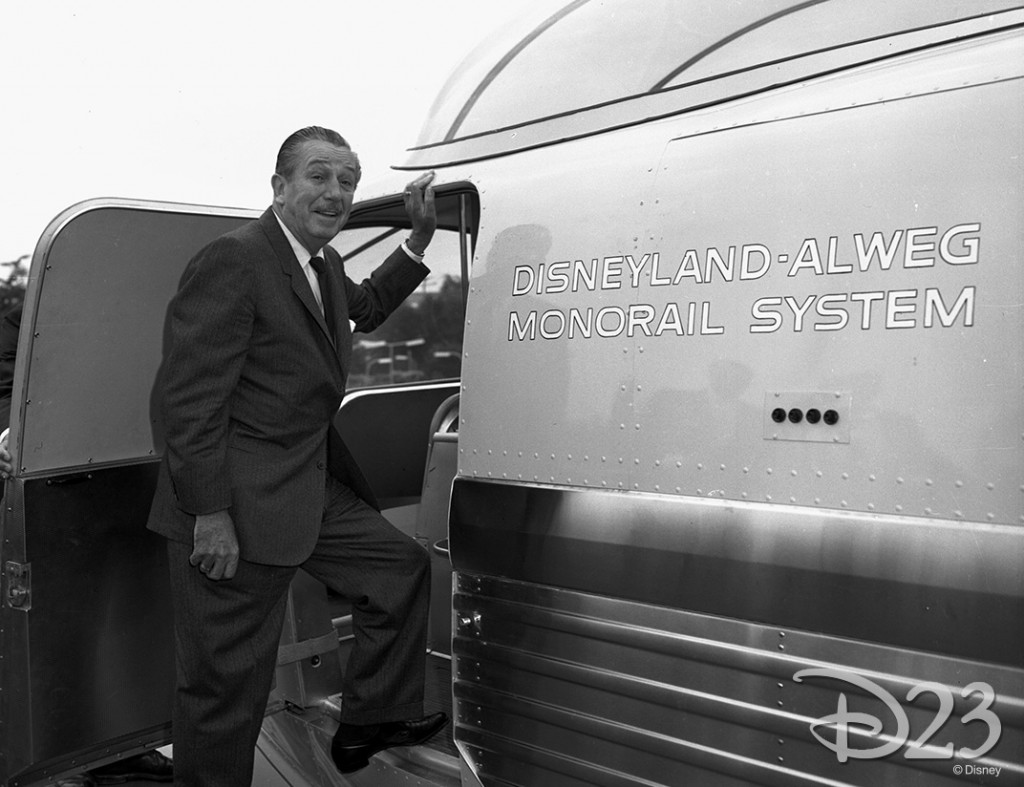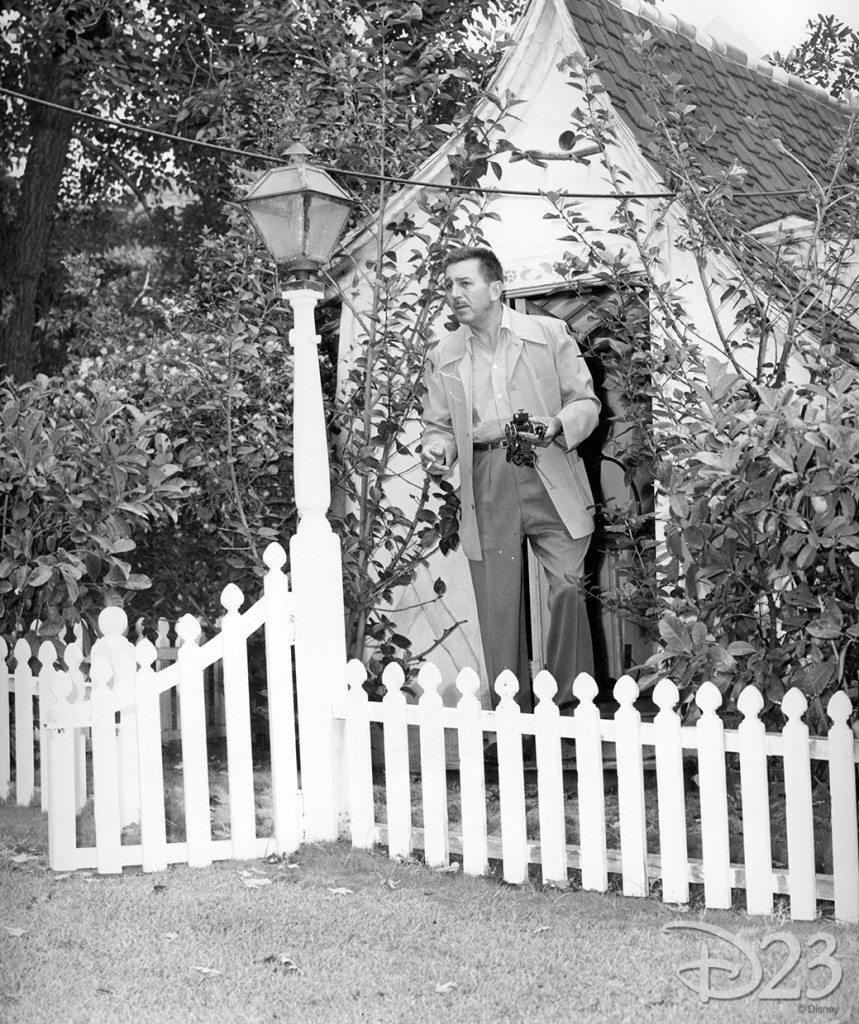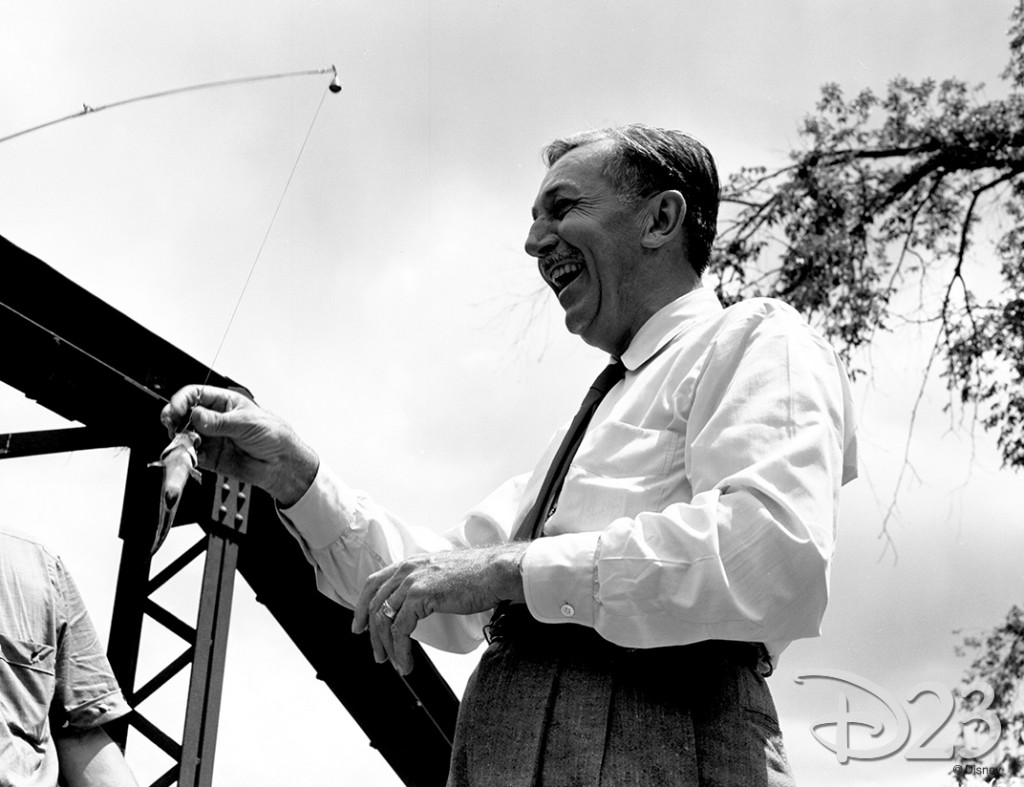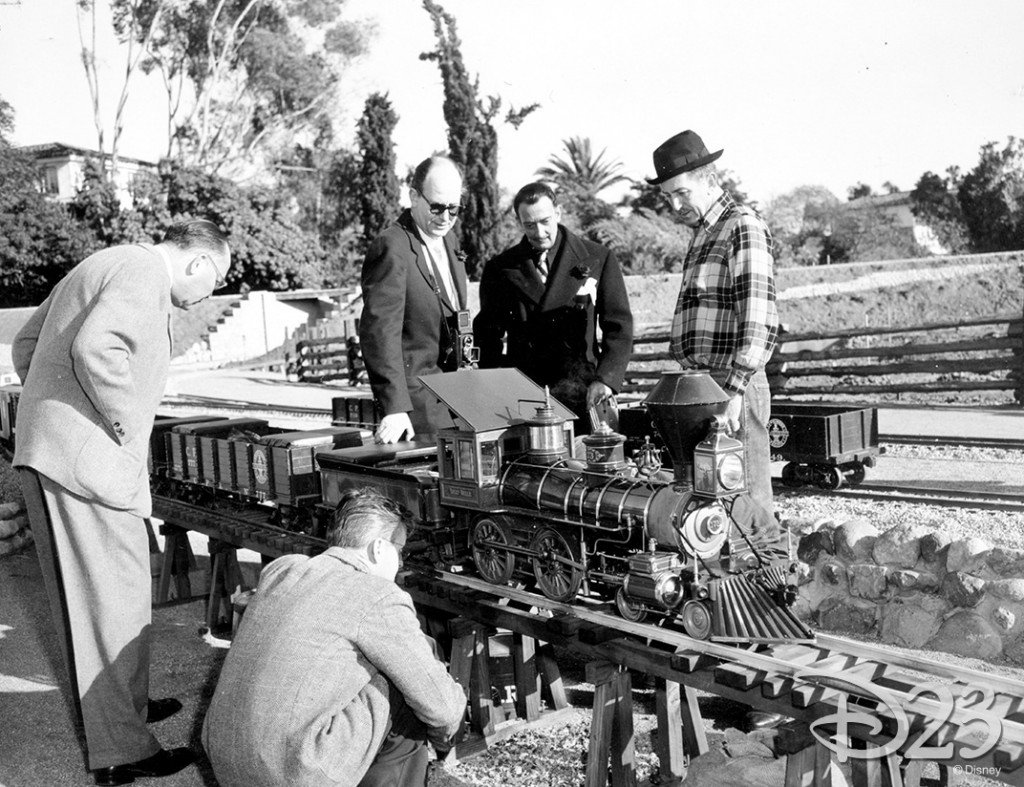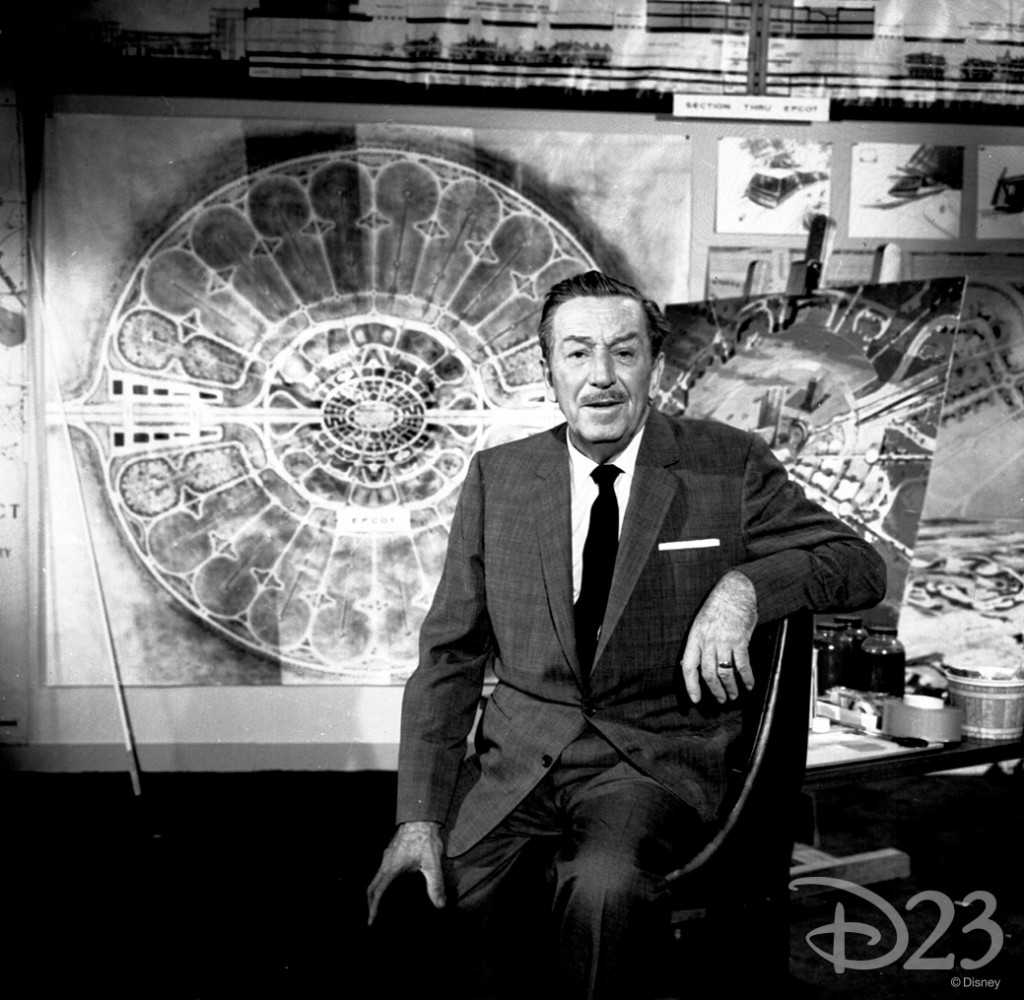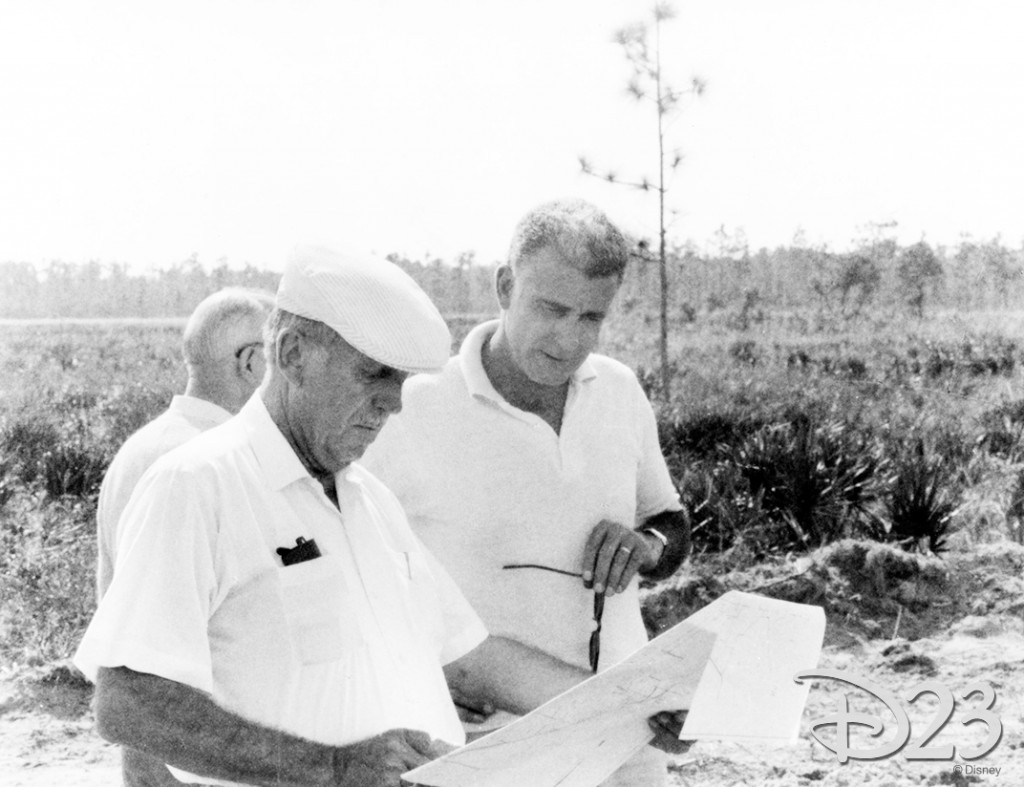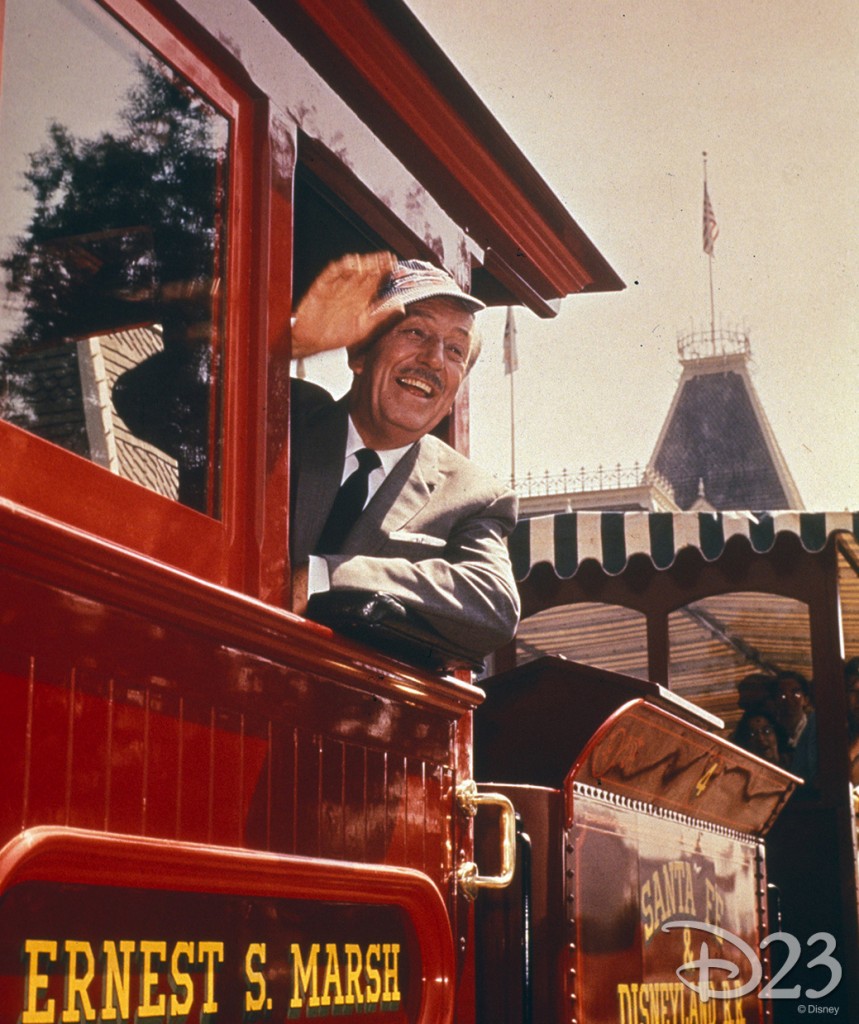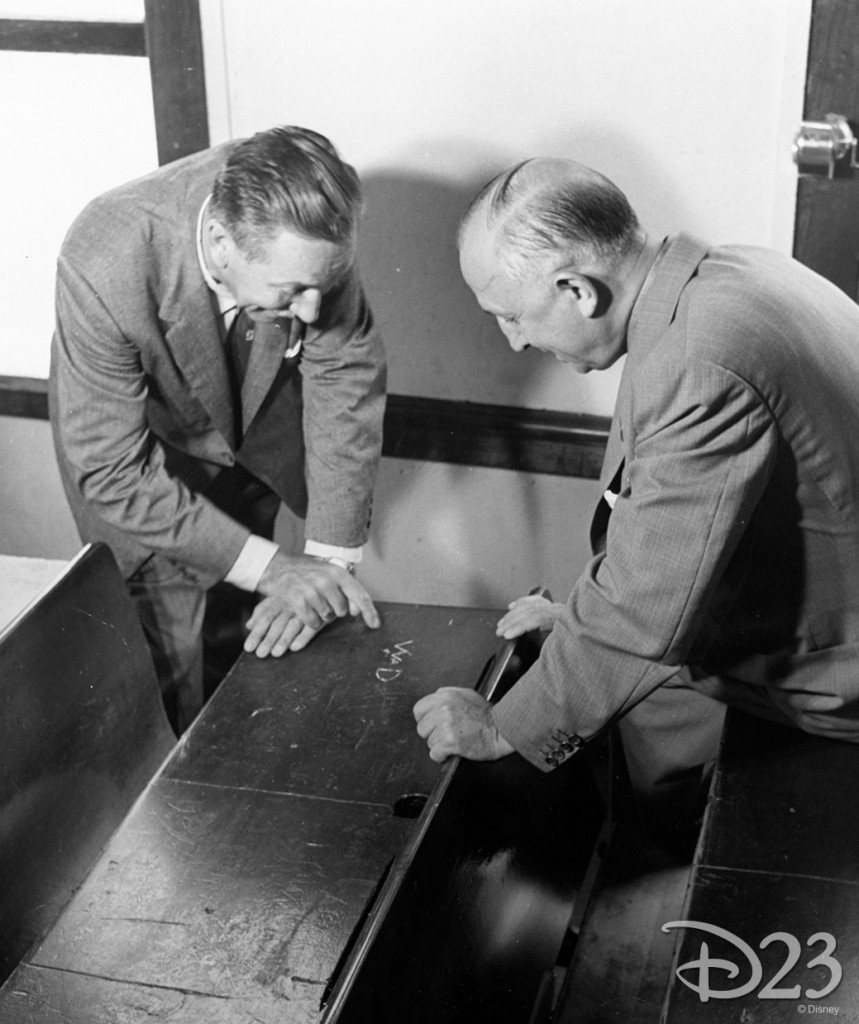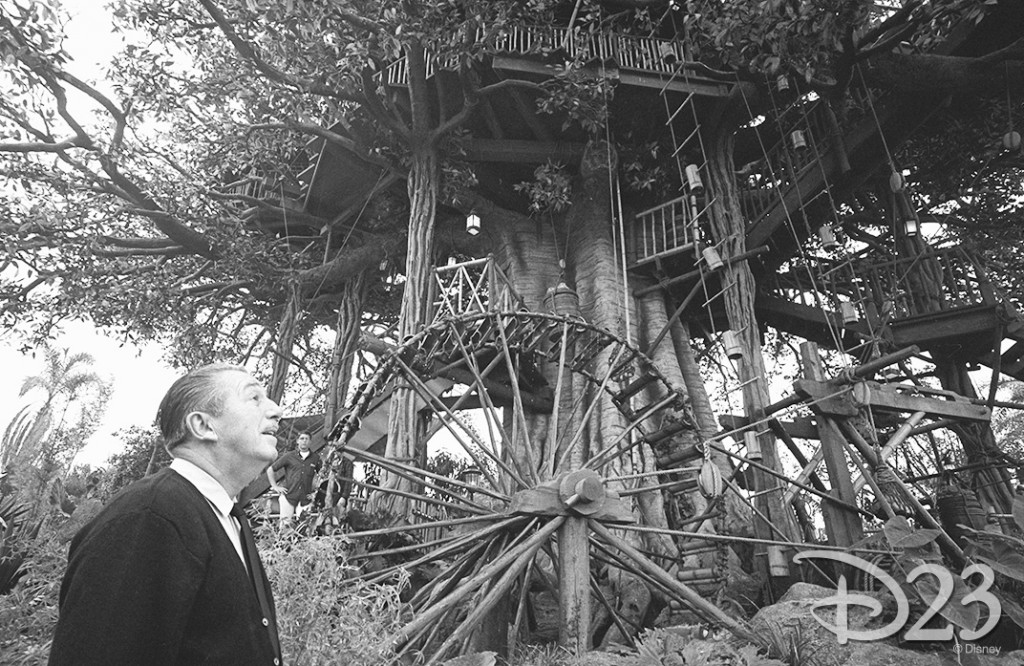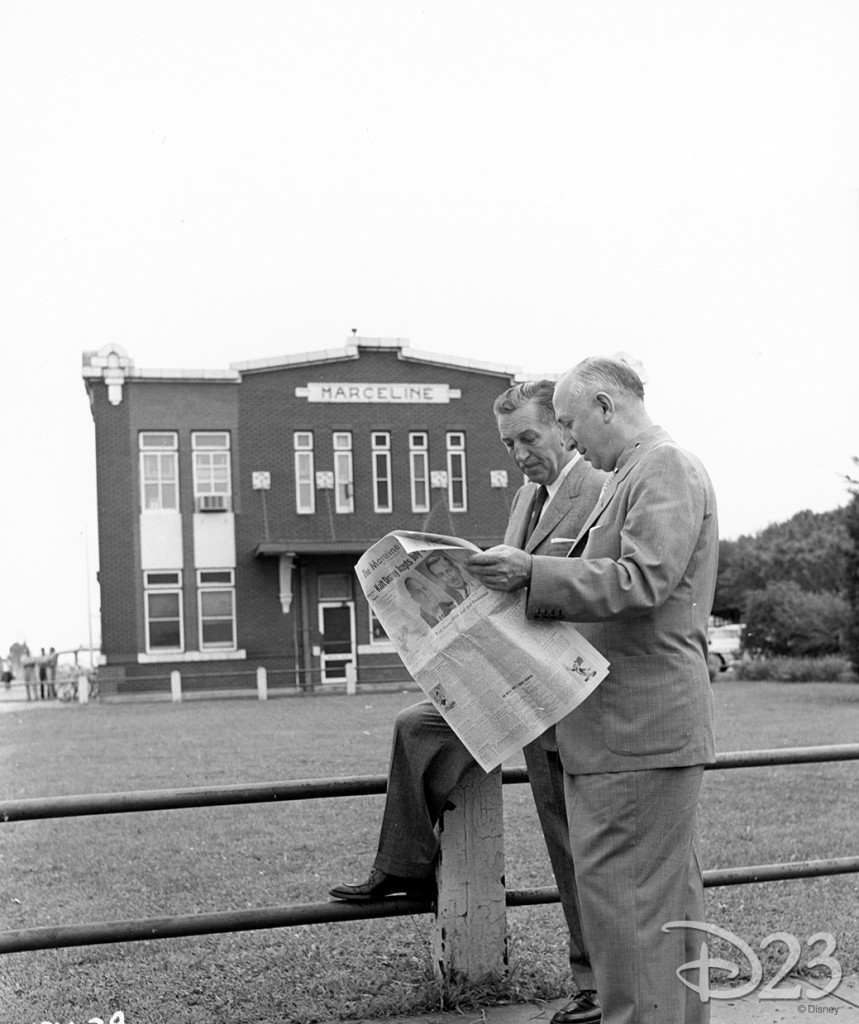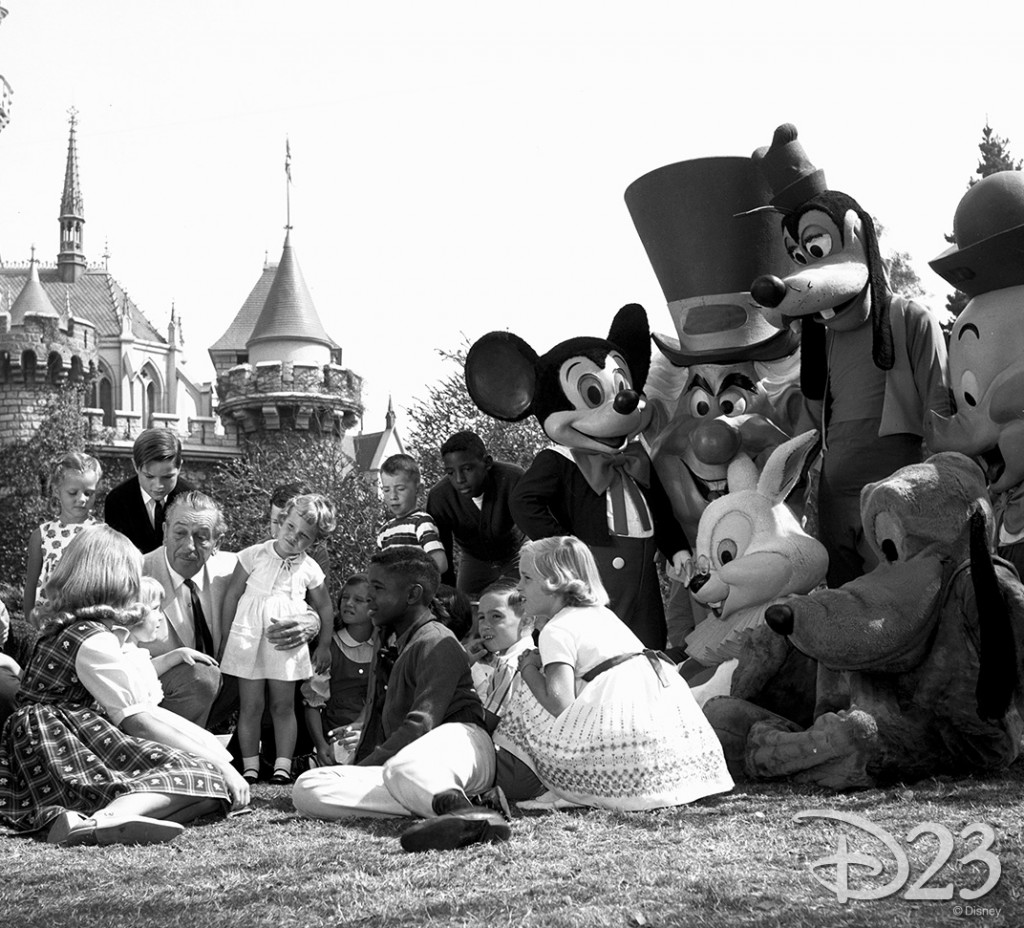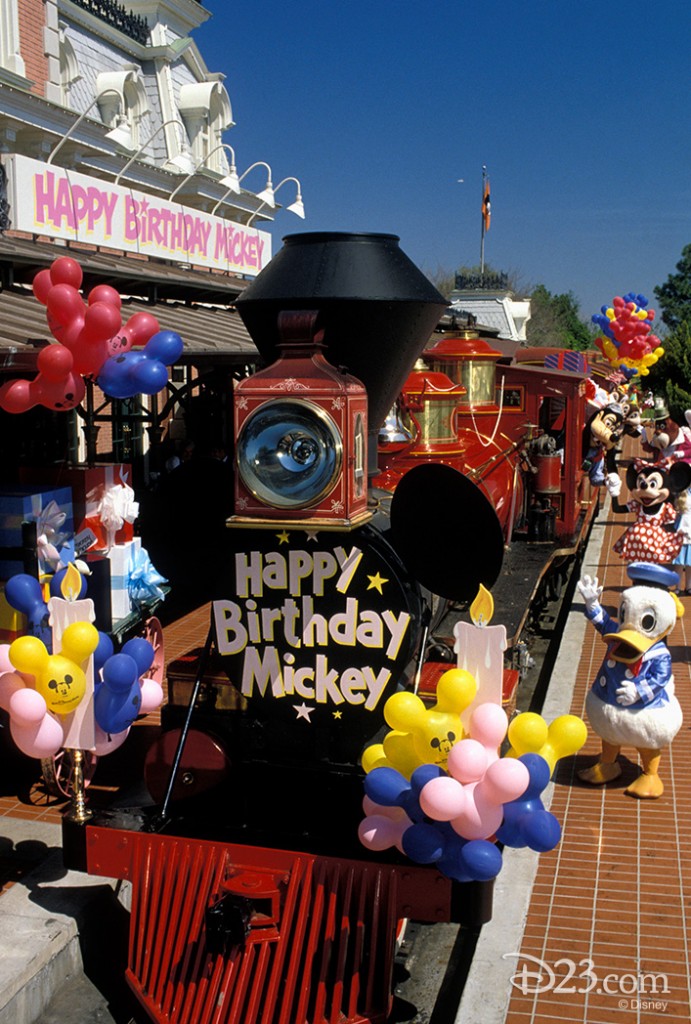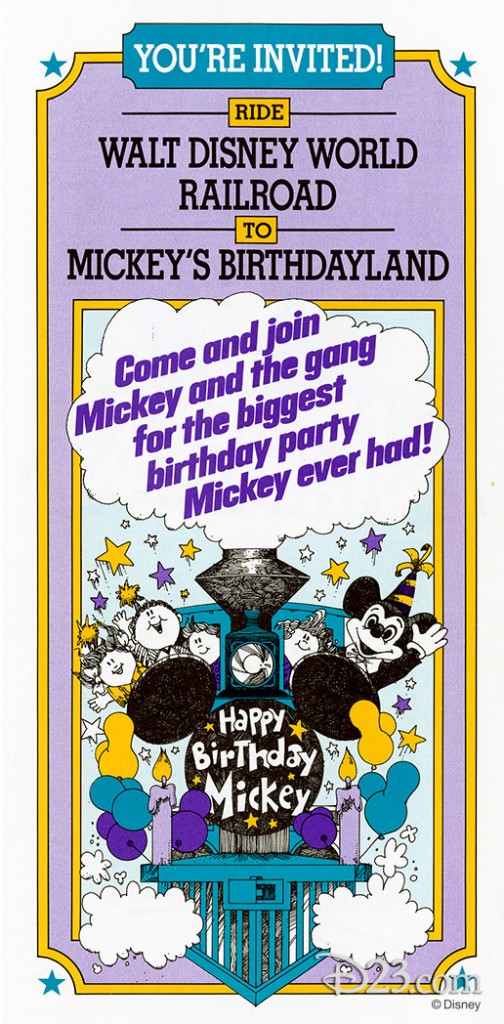In this behind-the-scenes production photo, we see a young Fairuza Balk on the set of Return to Oz (1985) with George Lucas, creator of the Star Wars universe. Lucas attended a few days of the film’s principal photography to support his colleague, and Oz director, Walter Murch. Notice Lucas’ Mickey Mouse sweater—perhaps a nod to the rich creative legacy that Walt Disney helped impart on Lucas himself.
The Ghost Relations Department
The idea of creating a spookhouse fascinated Walt Disney as early as 1951 –a time even before an expanse of orange groves would be chosen as the site for Disneyland. And while a brooding antebellum manor appeared on the shores of the Rivers of America in 1963, it would be six more years before the happy haunts would cast open their doors and allow foolish mortals inside.
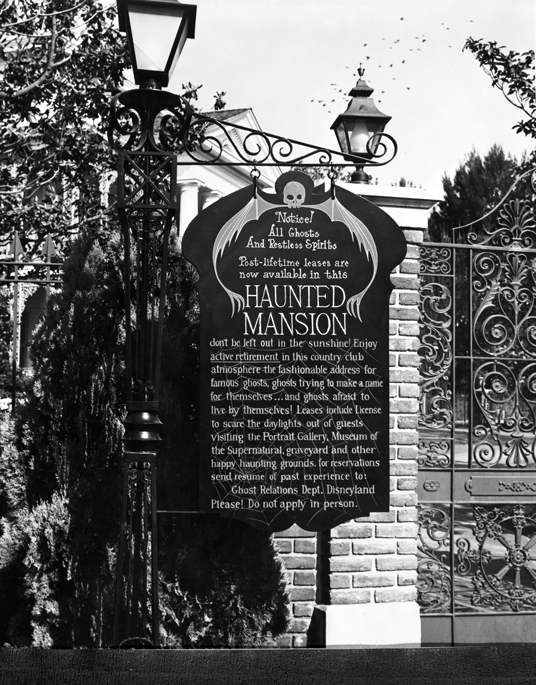
For a time, a sign posted by Disneyland’s “Ghost Relations Department” graced the gates of the mansion, recruiting house-hunting haunts for the upcoming attraction.
In 1966, Disney Legend Wally Boag submitted this script to Imagineering chief Dick Irvine; it’s an idea for a gag which could be placed outside the mansion to stir up buzz amongst park guests. An old-fashioned house phone would be placed by the mansion gates, and when passing guests picked up the receiver, they would be connected with a frightened man trapped within the basement of the mansion. After a tragic fate befalls the caller, a ghostly voice takes the line and delivers a blurb for the attraction.
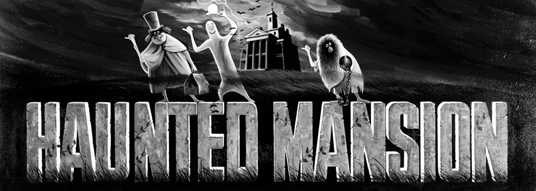
While Boag’s ghostly phone never made it into the park, he made many contributions which continue to be found in Disneyland today. Not only did he serve for decades as the comedic highlight of Frontierland’s Golden Horseshoe Revue, but he also helped develop the script of The Enchanted Tiki Room and provided the voice of its emcee, José.
Before Hinges Creaked In Doorless Chambers
This early script, written by Francis Xavier Atencio, also known as X Atencio, for the Haunted Mansion might sound familiar, but its Ghost Host had a slightly different spiel. In its 18 years of on-and-off development, Disneyland’s classic Haunted Mansion featured a slew of different concepts and plotlines.
From murderous sea captains to happy haunts celebrating a ghastly birthday party,
a number of stories were proposed. By the time that Imagineer X Atencio forwarded this draft to Imagineering executive Dick Irvine, though, the attraction was starting to approach its final form. Dated July 19, 1968, the script presents a different “Ghost Host” introduction for the Mansion’s foyer, intended to be delivered by a speaking bust.
Donald Duck Arrived in Print Three Years Ealier Than His On-Screen Appearance
Three years before the cantankerous fowl’s first big-screen appearance, Donald Duck’s name popped up as one of Mickey’s barnyard friends in this popular storybook.
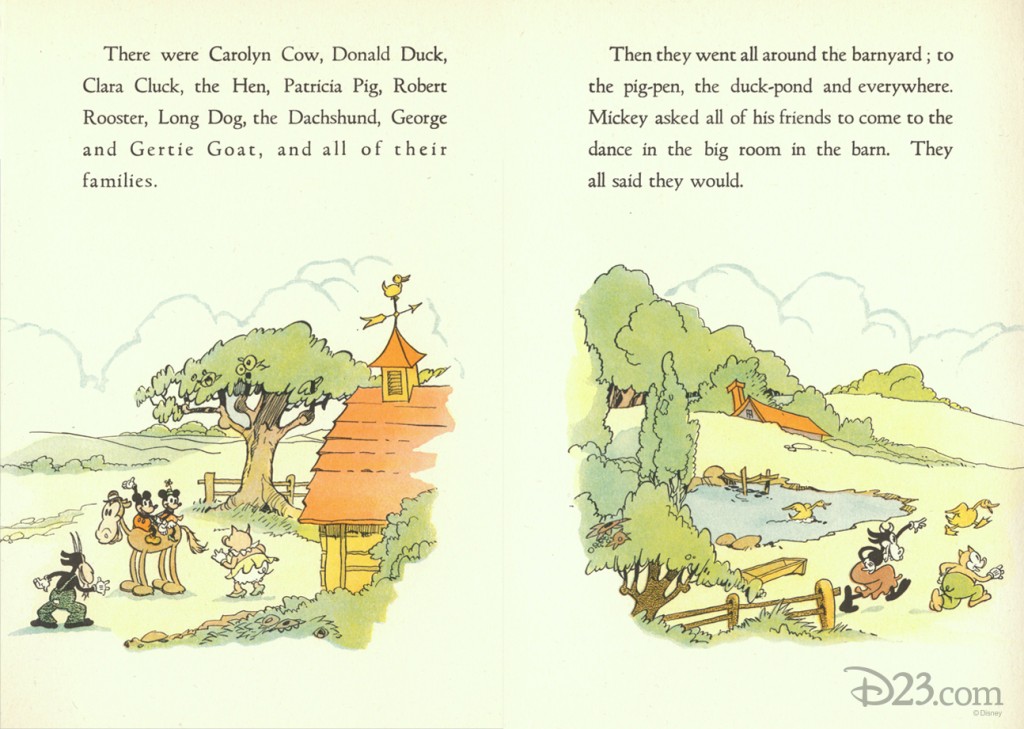
As fans of Disney Ducks will tell you, Donald Duck made his first appearance in the 1934 animated short The Wise Little Hen. But three years earlier, in 1931, the name “Donald Duck” appeared in the storybook The Adventures of Mickey Mouse. Donald looked a little different in those days, though. Aside from his jaunty green hat on the back cover, it might also be the last time he was seen wearing pants!
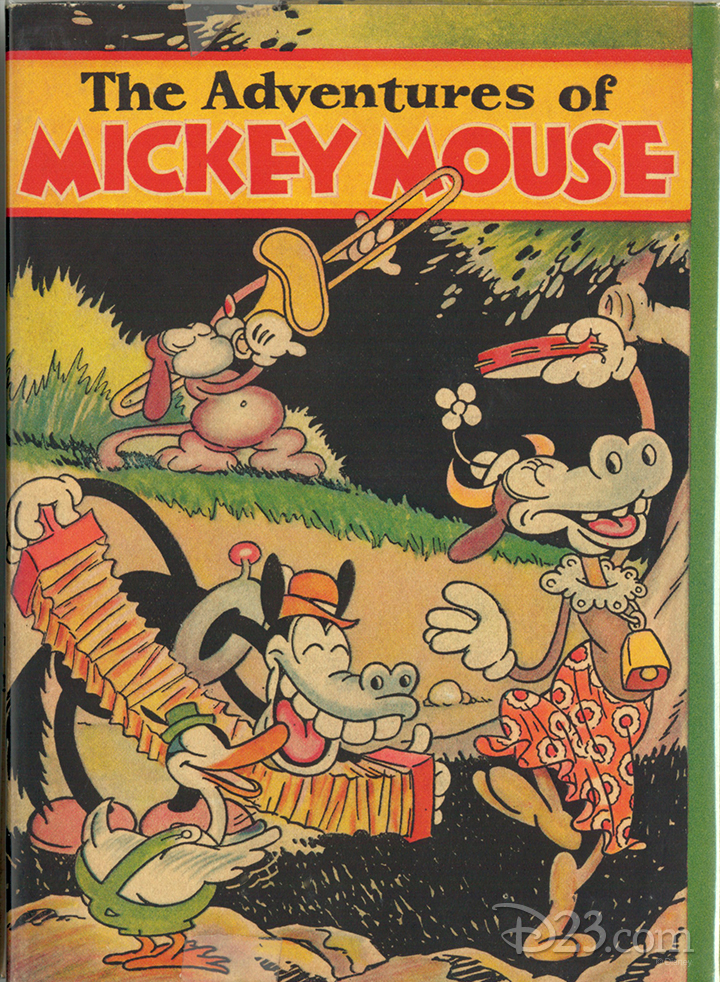
This was the first Disney book printed for retail sale,
published by the David McKay Company and credited to the staff of the Walt Disney Studio. It features many themes found in Mickey’s early adventures, possibly inspired by Walt’s youth in rural Missouri. There’s a farm—Mickey even lives in a “nest” under the barn!—and the story leads up to a big musical party.
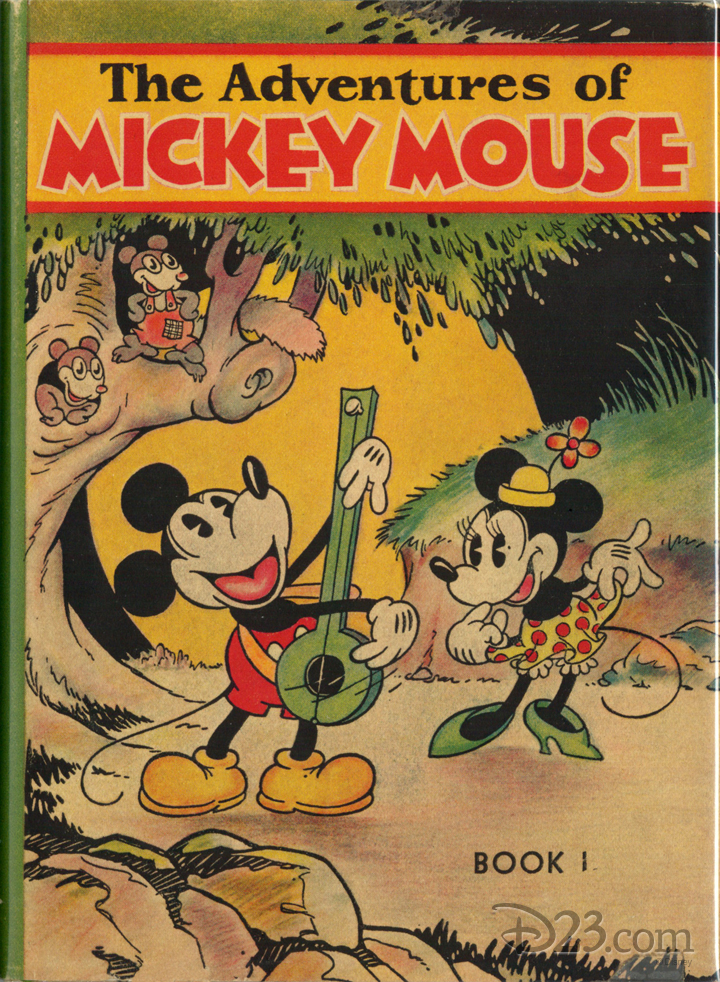
Naturally, Mickey and Minnie invite their barnyard friends to the shindig. As you can see in these pages, they mention Carolyn Cow, Clara Cluck, Patricia Pig, Robert Rooster, Long Dog the Dachshund, George and Gertie Goat… and Donald Duck! Some of these characters would go on to later film success—Clara Cluck also made her big-screen debut in 1934, in Orphan’s Benefit while “Carolyn Cow” looks remarkably similar to Clarabelle Cow, then already a star of the Mickey Mouse shorts. Others, like Patricia Pig, would make appearances in Mickey’s newspaper strip but never become Hollywood stars. The rest are still waiting for their big break years later—who wouldn’t want to see the further adventures of Long Dog the Dachshund?
As for Donald, he would become one of Disney’s biggest stars, eventually making more theatrical appearances than Mickey Mouse himself.
The Inspiration for Frozen
If you’ve ever woken up to a winter wonderland outside your bedroom window or were awestruck by an ice sculptor’s creation, then you’ll understand how Walt Disney Animation Studio’s Mike Giaimo, art director for Disney’s upcoming film Frozen, felt when he headed to Canada and Norway to gather inspirational references for the film.
“I started looking at research and travel books and placed sticky notes on things that interested me . And then when I started looking back at all my notes from the Scandinavian book,
I realized that about 80 percent were all on things and locations from Norway.” — Mike Giaimo
Mike put together a list of things that inspired him from his research trips to share with Disney fans. And in doing so, he reveals some of the moods and themes of Frozen’s breathtaking landscapes and our newest Disney characters.
Disney Animators “Let it Go” for Frozen ►
Here are the highlights of his notes from his research trip to Canada and the Scandinavian countries in Northern Europe:
Translucent Ice Hotels
“The experience of the ice hotels from our research trips influenced the look of the ice palace created by Elsa (voiced by Idina Menzel from Broadway’s Wicked). Quebec, Canada has a famous ice hotel that they build it every year. Various artists design different rooms and create all sorts of ice effects. There are etchings in the ice and ice-block columns, and beds, chairs, and tables made of ice. And its really, really beautiful to see. When you walk into a structure that is made entirely of ice and packed snow, it is truly transporting. There is something elusive and ethereal about it because the icy surface from floor up the walls to the ceiling makes you feel like you are on a cloud or in some kind of Never Land in a way. We were very inspired by that and wanted to bring that into the ice palace. Also, these hotels are very different in the day and night because of the way they light them inside and out. It’s very dramatic the way the colors saturate on the icy surfaces.”
Rugged Mountain Men
“Our character Kristoff (voiced by Glee’s Jonathan Groff) is a mountain man. He’s a rugged individualist and a kind of a loner. He’s his own man and the guy who feels he doesn’t need anyone in his life… Sven can get a long just fine—thank you very much. He is an ice harvester. And in cold regions where we visited there are people just like farmers who harvest ice from frozen lakes. They cut it out and place it on long flatbeds and put it in storage. And that’s how our film actually opens—we see the ice harvesters at work and we meet, at that time, a very young Kristoff and Sven. He’s about six years old and he’s learning the trade from the adult ice harvesters. We see a baby Sven with him, too, who’s trying to tow his own block of ice with the big guys. Kristoff is such a loner that he is reluctant when Anna (voiced by Kristen Bell from Forgetting Sarah Marshall) asks him to help her navigate the mountain terrain to find her sister. But he knows the area better than anybody else, so he agrees.”
Reindeer (also known as Caribou in Canada)
“Sven the reindeer is a great character in the film; it’s hard to take your eyes off of him. He is Kristoff’s reindeer and we created him to be like a big, lovable Labrador dog. But he can also get his mojo on when he needs to and be serious. He is just the kind of Disney character that you’ll want to take home with you.”
Snow… and Snowmen
“Everyone already loves Olaf our snowman in Frozen. He’s just a runaway hit. He’s the snowman that longs for summer so its very funny.”

The Entire Country of Norway
“Scandinavia is really picturesque and a lot of the illustrative versions of Hans Christian Anderson’s The Snow Queen reflect a Scandinavian influence—some were Russian, but mostly Scandinavian. I started looking at research and travel books and placed sticky notes on things that interested me. You get more specific as you hone in on what visually interests you and where the story is going. So I thought it would be really great to set our kingdom, Arendelle, on a fjord. I thought we could get a lot of mileage out of that visually. And then when I started looking back at all my notes from the Scandinavian book, I realized that about 80 percent were all on things and locations from Norway. So I decided Norway was it. It not only had the fjords I wanted, but it also had some great culture and detailing. I knew this was the place.”
Rosemaling
“Norway’s decorative art, called rosemaling, is all over this film. It’s their rustic folk art and you find it on clothing, boxes, furniture, architecture—its everywhere. You can find it on things great and small.”
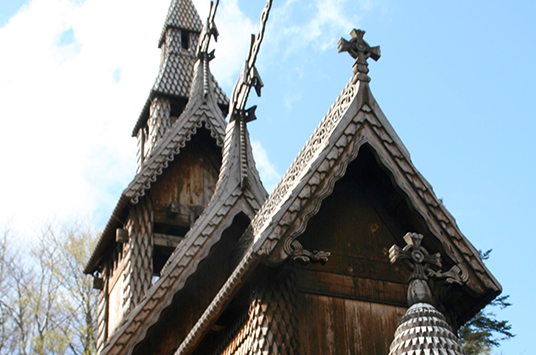
Sami People of Norway
“We were influenced by a Sami couple who ran a reindeer farm. The Sami are similar to our Native Americans in the U.S. They are indigenous; they’ve lived in Norway for thousands of years. Their cultural roots run really deep. They influenced our creation of Kristoff. His outfit is Sami influenced. We learned about how they raise reindeer. ”
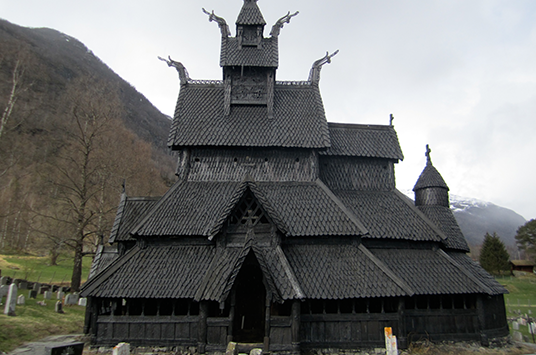
And Last But Certainly Not Least, Castles
“We went into a castle in Oslo where we saw this hand-painted, decorative pattern on the dining room walls, which was so inspirational. Little did we know that those walls we saw in Oslo would influence the whole look of this palace—it’s really a stunning look. For the interior of our castle we created this red wallpaper that is in just about every room. When you see the characters against this wall covering it is really stunning.”
A Disney Afternoon Show That Almost Was
Check out this awesome concept art for a never-produced show called Justice Ducks, a “duck” spin-off using the characters Darkwing Duck and Gizmo Duck from the series’ Darkwing Duck and Duck Tales.
That’s right. Look out Avengers.
There was almost another group of super heroes that would have protected all of humanity… or, in this case, the Earth’s dogs, ducks, and chickens.
The concept art for this never-produced Disney Television Animation series recently surfaced in the Disney archives—found in a folder marked “pitch.”
Along with the art was a document (shown below) that notes some of the ideas for the characters in the proposed series. The newly formed crime-fighting duo—Darkwing and Gizmo—could have fought crime with three more super ducks, including the pliable poultry Rubber Chicken, and they would have take on evil villains on a “planetary scale” such as the evil Quackerjack.

Walt Through the Years
Disney Theatrical Productions to Present “Broadway and Beyond” at D23 Expo 2013
D23: The Official Disney Fan Club is thrilled to announce a special theatrical performance, “Broadway and Beyond,” which will appear at D23 Expo 2013. Thomas Schumacher, president and producer, Disney Theatrical Productions, will host this musical journey into Disney’s history on Broadway and beyond. The star-studded event will feature an all-star lineup, including Heidi Blickenstaff (The Little Mermaid), Ashley Brown (Mary Poppins and Beauty and the Beast), Merle Dandridge (Tarzan and Aida), Josh Strickland (Tarzan) and Alton Fitzgerald White (The Lion King). They will sing beloved songs from the award-winning musicals they starred in as well as classic tunes from the Disney on Broadway catalogue.
The one-night-only performance will take place on Friday, August 9, at 6:30 p.m. on Stage 23.
For more information on D23 Expo 2013, visit D23Expo.com.
The Making of a Mickey Mouse Doll In 1930s Style
As the popularity of Mickey Mouse began to soar in the early 1930s, Walt and Roy were confronted with the challenge of meeting the explosive demand for engaging consumer products, while sustaining the creative integrity and consistent quality of their character merchandise. The first merchandise contract was signed in February 1930, granting Geo. Borgfeldt & Co. the responsibility to manage the licensing of Disney product to manufacturers in the U.S. and abroad. One of the items that Walt and Roy were most focused on was the production of a Mickey Mouse stuffed doll.
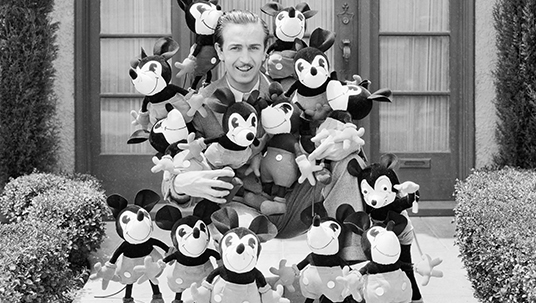
A successful example of a Mickey Mouse doll had already been created by an enterprising seamstress in Los Angeles, Charlotte Clark (née Carolyn Geis), who in January 1930 had asked her then 16-year-old nephew and aspiring young artist, Bob Clampett, to come up with sketches of Mickey Mouse on which she could base her doll design. Not having any reference material handy, Bob grabbed his sketch pad and went to the Alexander Theater in Glendale, California, to sketch Mickey in action from one of the Mickey Mouse cartoon shorts being screened there. Charlotte and Bob created the first doll, and on the advice of Bob’s father, sought the approval from Walt and Roy to produce and sell their Mickey Mouse doll creations. Not only were the Disney brothers pleased with Charlotte Clark’s doll, they set it as the standard against which all subsequent Mickey Mouse dolls were soon to be measured.
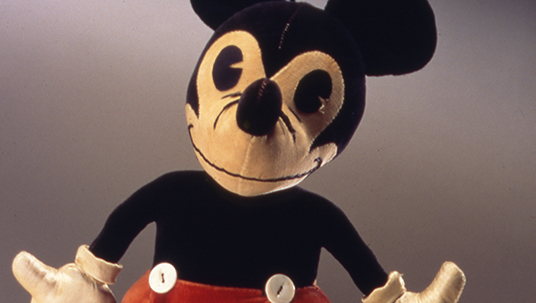
While Charlotte Clark’s Mickey Mouse dolls provided the exemplar model of product quality and character likeness that satisfied Walt and Roy/s high expectations, there were limits to the quantity that could be produced by Clark and the small team assembled to create the dolls. By November 1930, production reached three to four hundred dolls per week at the “Doll House,” the small rented house Walt set up near the studio for the exclusive production of these handmade Mickey Mouse dolls, which originally were given out to business acquaintances, select studio visitors, and family friends.
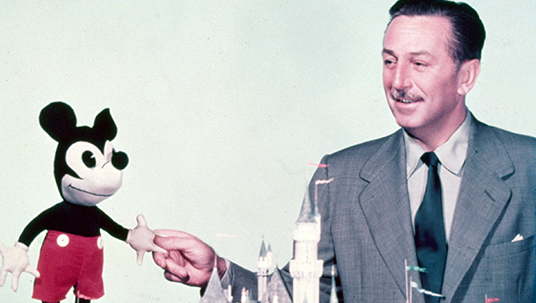
To better meet the demand for Mickey Mouse dolls, George Borgfeldt, following the arrangements stipulated in his licensing agreement, was instructed to identify a manufacturer who could create dolls at an increased rate but maintain the specific quality and design of those being produced by Charlotte Clark. This task proved to be far more challenging than expected, with more than a year spent in creating multiple sample dolls followed by pointed correspondence from Roy Disney who, with Walt, was adamant in expressing concern over any deviation from the integrity of the doll they required.
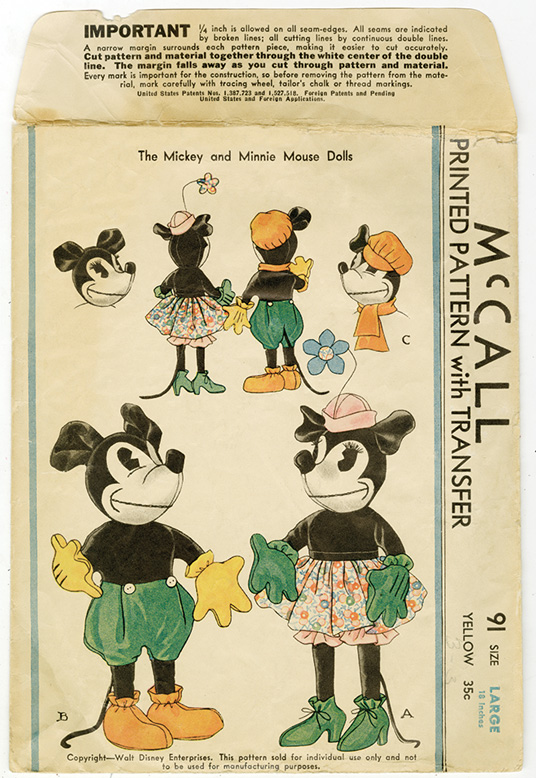
Early in 1931, Clark was also producing a Minnie Mouse doll, which Borgfeldt was asked to include in his efforts to manufacture a line of Mickey dolls. By October 1931, however, Walt and Roy were still disappointed in the examples provided by Borgfeldt but were limited by their licensing agreement with him from engaging in other production contracts. Driven by their priority to meet the demand for Mickey and Minnie dolls that sustained the character design they required, while adhering to the stipulations of their licensing agreement, Walt and Roy decided to take a different production path entirely. In partnership with the McCall Company of New York City, they chose to provide the opportunity for the public to construct their own dolls, utilizing the same design and method as those of Clark and her Doll House team.
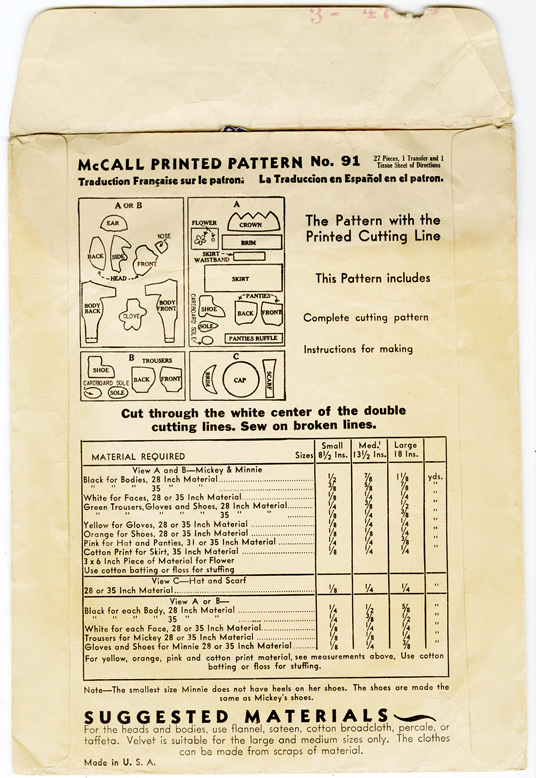
In 1932, McCall Printed Pattern No. 91, for producing a pair of Mickey and Minnie Mouse dolls, was issued at a cost of 35 cents, in one of three different sizes of dolls: small (8½ inches), medium (13½ inches), and large (18 inches). The pattern envelope contained a tissue-cutting pattern for the 27 pieces required to assemble one Mickey and one Minnie doll, complete sewing instructions, a hot-iron transfer for stitching facial details, and a list of required materials and color suggestions for each element. The front of the envelope shows a full-color illustration for each doll, front and back, with Mickey sporting a pair of jaunty green trousers, a reference perhaps, to the wardrobe he donned for his first color animated appearance in the 1932 short film, Parade of the Award Nominees produced for a screening at the Academy Awards® Banquet that same year. Also printed across the bottom of the pattern envelope are the specifications that “This pattern sold for individual use only and not to be used for manufacturing purposes,” emphasizing the distinction of the pattern’s home-sewing, consumer-focused usage.
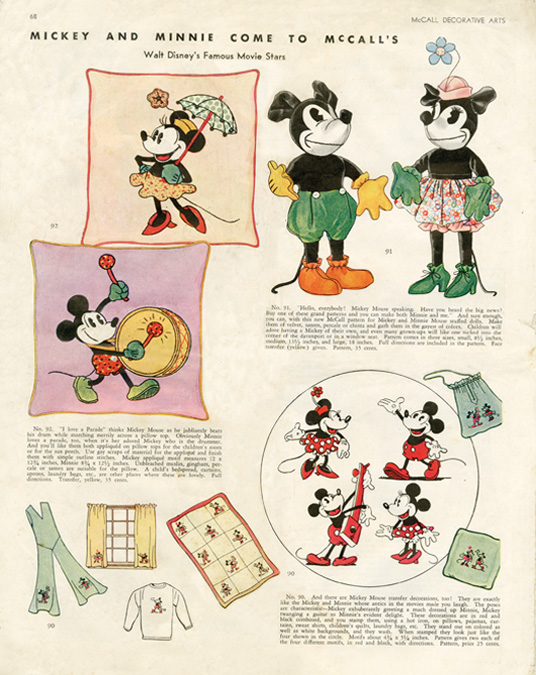
In addition to encouraging consumers to stitch their own dolls, McCall’s promoted Mickey and Minnie appliqués that could be used to decorate pillows, curtains, aprons, children’s bedspreads, and other home accessories. There were also Mickey and Minnie iron-on transfers, in characteristic poses inspired by their films, suitable for adorning pajamas, sweat shirts, quilts, and laundry bags, according to an advertisement welcoming “Walt Disney’s Famous Movie Stars” in the Summer 1933 issue of McCall Decorative Arts magazine.
The McCall Pattern No. 91 was available from 1932 through 1939, resulting in thousands of treasured and now highly collectible Mickey and Minnie dolls. By 1934, after George Borgfeldt’s contract agreement had expired and the inimitable Kay Kamen was helming the company’s licensing business, Walt and Roy were able to arrange for the Knickerbocker Toy Company to manufacture Mickey and Minnie stuffed dolls, also designed by Charlotte Clark. Later, in 1947, dolls were made by the Gund Manufacturing Company, where Clark continued to oversee the dolls’ designs until her retirement in 1958. As a result of Walt and Roy’s commitment to the creative integrity of their characters and product, the Mickey and Minnie dolls from Charlotte Clark’s designs are still some of the most highly prized Disney collectibles of all time.
By Libby Spatz, Archivist and Librarian, Disney Consumer Products
Unwrapping Mickey’s Birthdayland at Magic Kingdom
Opened on June 18, 1988, as part of a yearlong celebration of Mickey Mouse’s 60th birthday, Mickey’s Birthdayland was meant to be a temporary land that occupied the approximate three-acre space adjacent to Fantasyland that’s currently part of Storybook Circus in New Fantasyland at Magic Kingdom Park.
For a generation of twenty and thirty-somethings (and their families), simply mentioning this area will bring back fond memories of meeting Mickey Mouse for the first time, pastel colored Duckburg-themed building facades, and Minnie Moo the cow. There was something for everyone to enjoy in this colorfully simple land tucked away in the back of Magic Kingdom Park. Its success at entertaining and pleasing guests would spur the area to be re-themed as Mickey’s Starland in 1990, Mickey’s Toyland in late 1995, and finally as Mickey’s Toontown Fair for the summer of 1996.
But before we get there in Disney history, let’s take a stroll back in time to Duckburg, U.S.A., to help wish our pal Mickey a happy 60th birthday. All aboard Mickey’s Birthdayland Express, next stop—fun!
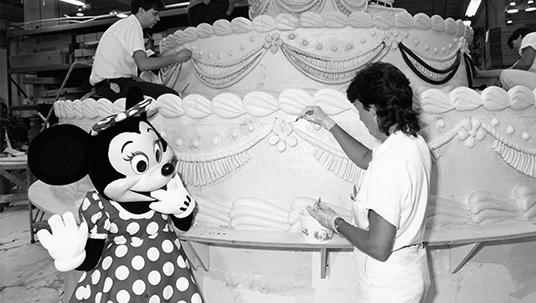
Here, Minnie Mouse helps a talented and dedicated team of artists complete a “surprise” cake for Mickey. This large set piece would appear in Minnie’s Surprise Birthday Party, the featured show that ran from June 18, 1988, to April 22, 1990, in Mickey’s Birthdayland.

Goofy prepares to trim the hair of an artist touching up the façade of “Goofy’s Clip Joint Barber Shop” – one of the many Duckburg-inspired toon-themed buildings and storefronts that populated the area. Other facades included McDuck’s Mansion, Daisy’s Café, Duck County School, McDuck’s Bank, the S.S. Donald Duck, and others. These quirky locales proved to be popular picture spots for many guests.
While birthday festivities took place at Magic Kingdom Park, the Walt Disney World Railroad temporarily was called the Mickey’s Birthdayland Express. Guests boarded the famous railway for a scenic trip around the Magic Kingdom, embarking on to Mickey’s Birthdayland where the whole family could partake in the party.
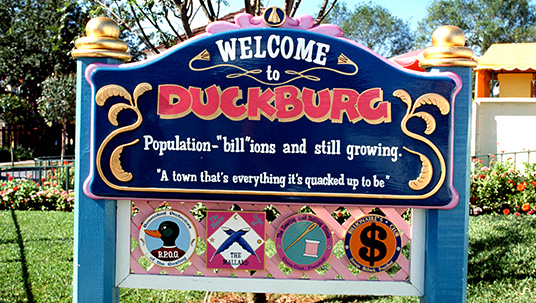
Duckburg, U.S.A. welcomed you to help celebrate Mickey’s 60th Birthday!
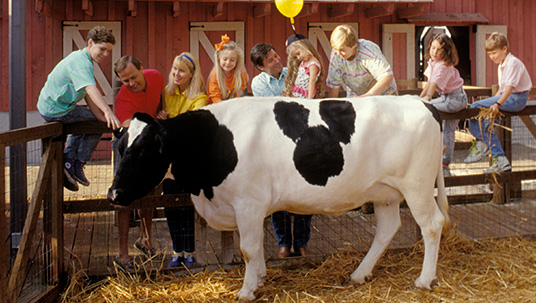
Grandma Duck’s Farm, and the famous tri-circle spotted cow, Minnie Moo, entertained guests from June 18, 1988 to March 11, 1996.
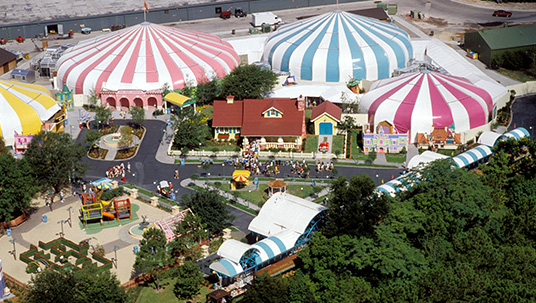
This bird’s-eye view of Mickey’s Birthdayland showcases the general layout of the area. Note Mickey’s house at center (complete with car parked in the driveway), and the several small Duckburg-themed facades near the front sides of the larger show tents. Weather eyes can spot Cornelius Coot Commons at the top left. This small square and fountain was dedicated to the founder of Duckburg, U.S.A., Cornelius Coot.
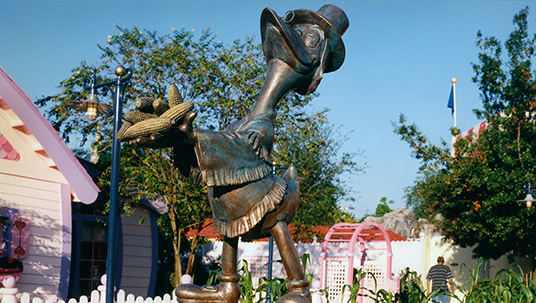
The large, memorable statue of Cornelius Coot would hold over into Mickey’s Starland in 1990, and Mickey’s Toontown Fair in 1996. After the closing of the Fair in early 2011, the statue of Coot was safely transitioned to the Walt Disney Archives, where it proudly resides today as a fun (and heavy) reminder of the growth and change that has occurred in that section of Magic Kingdom Park. It’s a fine piece of Disney craftsmanship and history, representing more than 20 years of fun-filled and whimsical memories.



